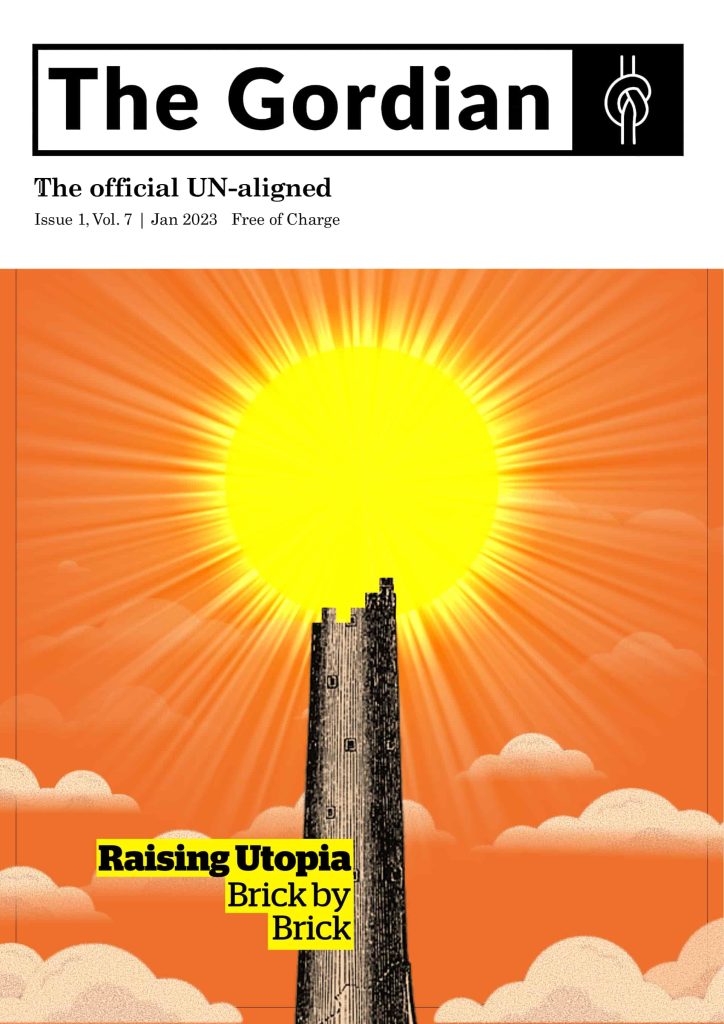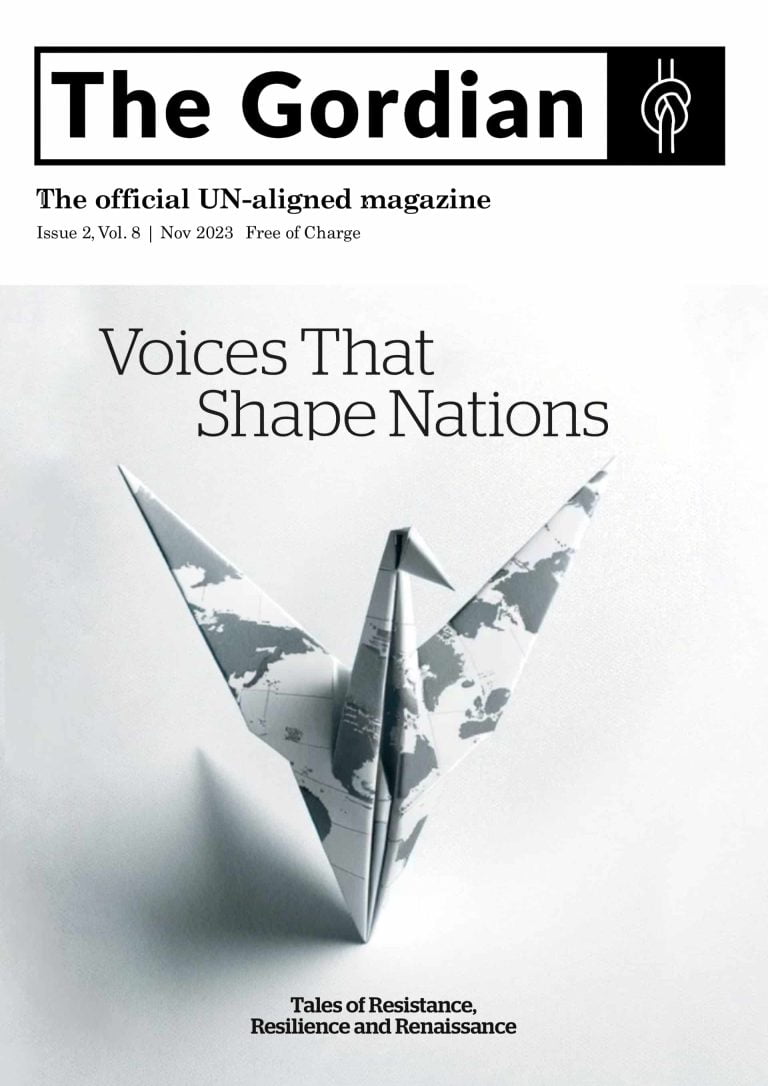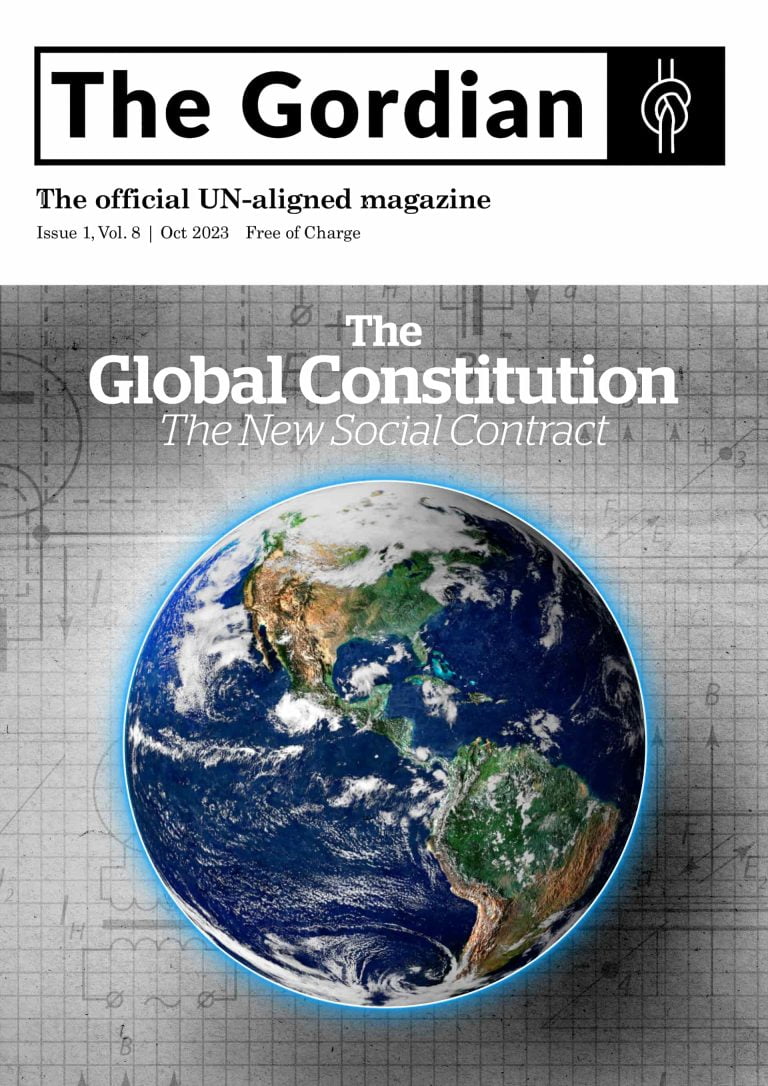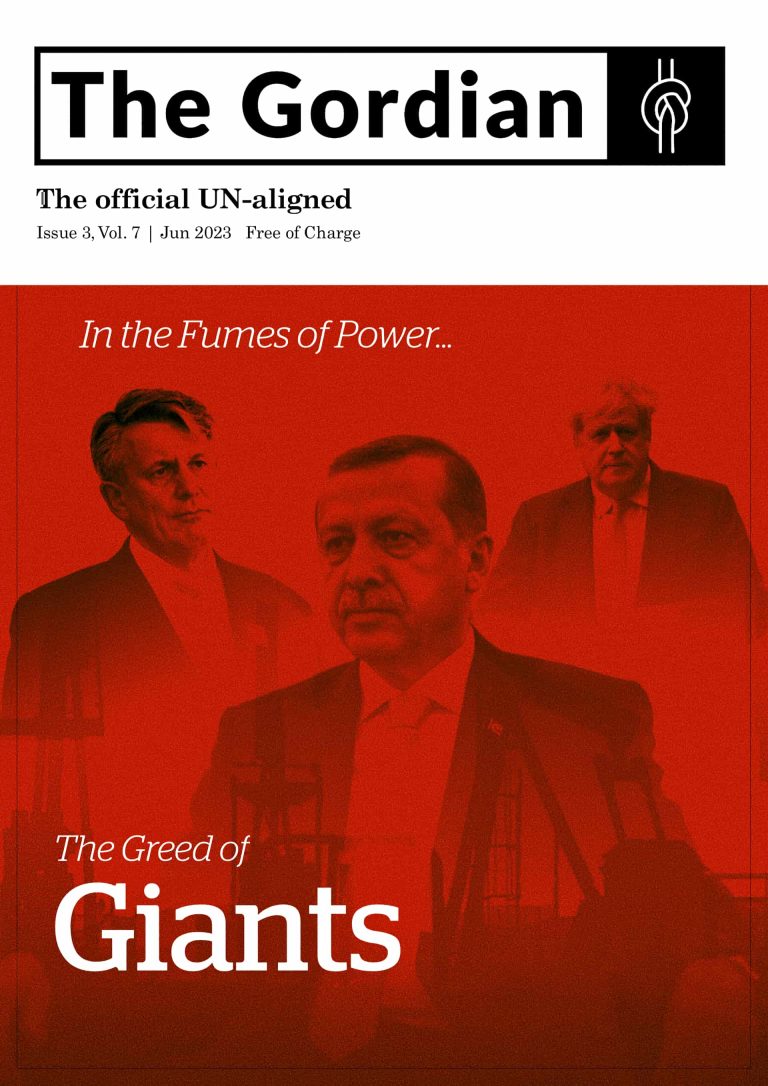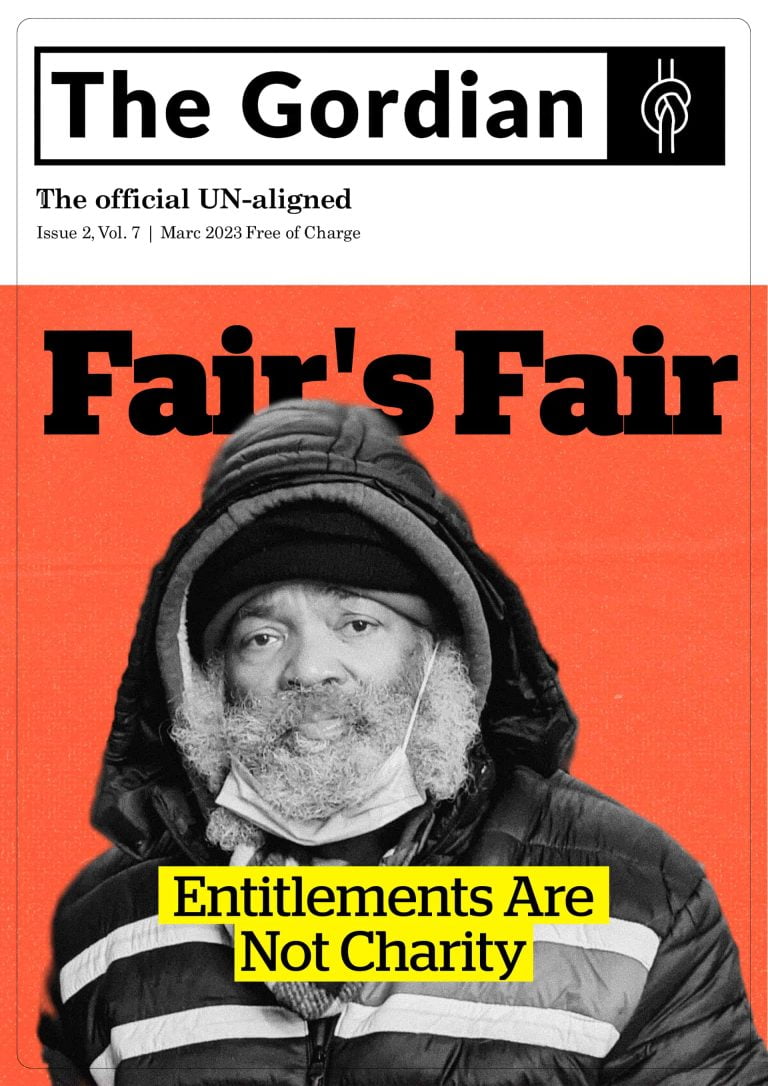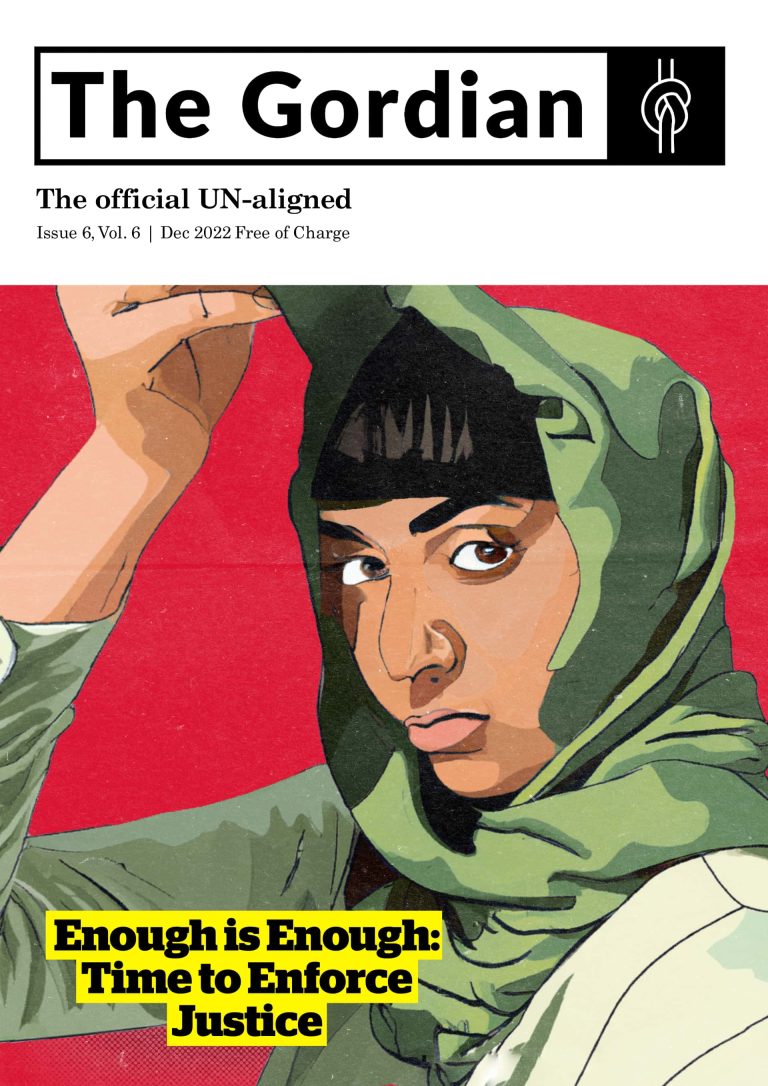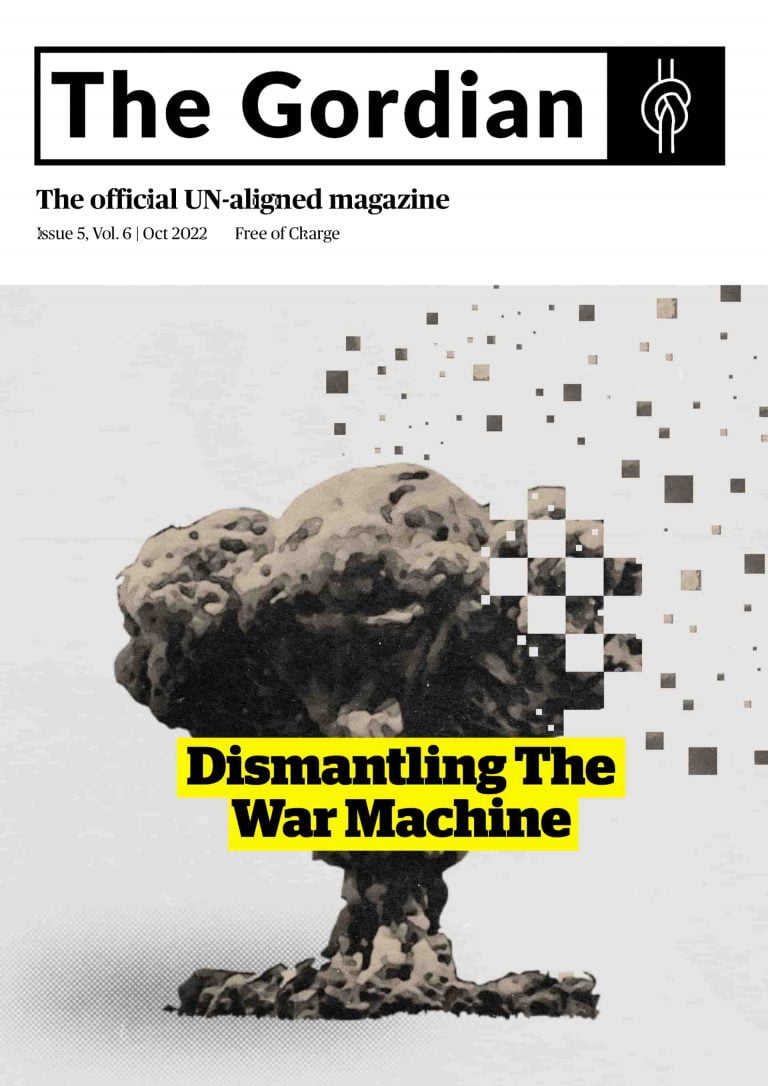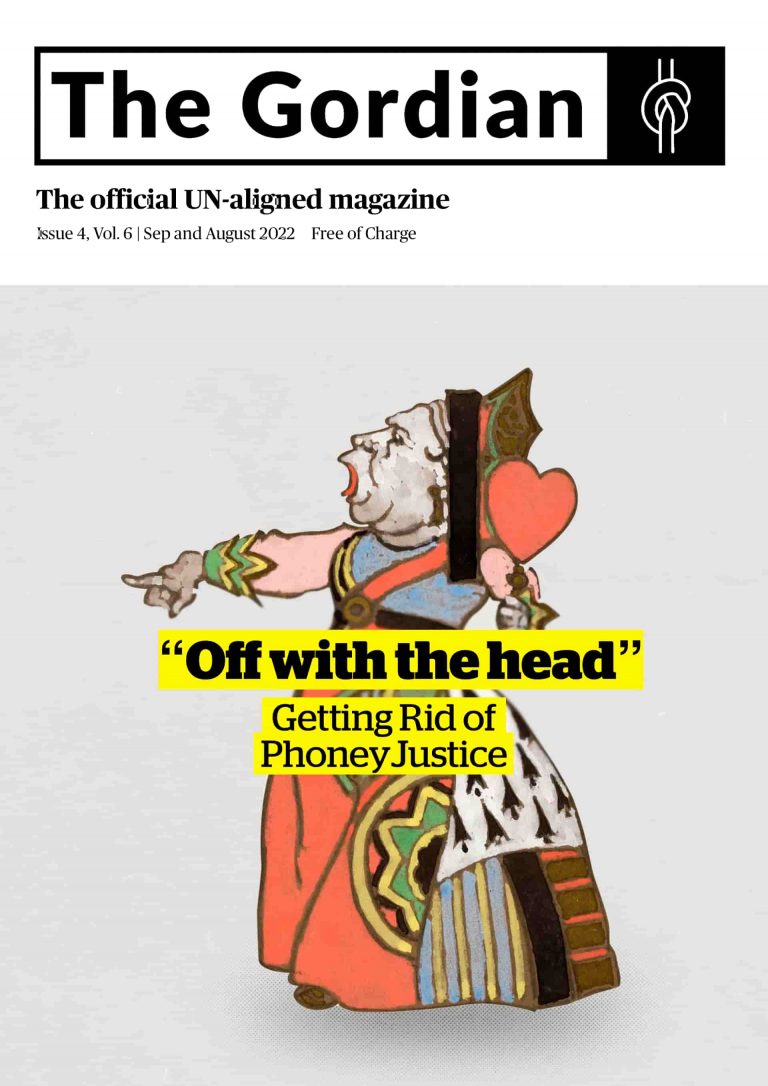Letter From the Editors
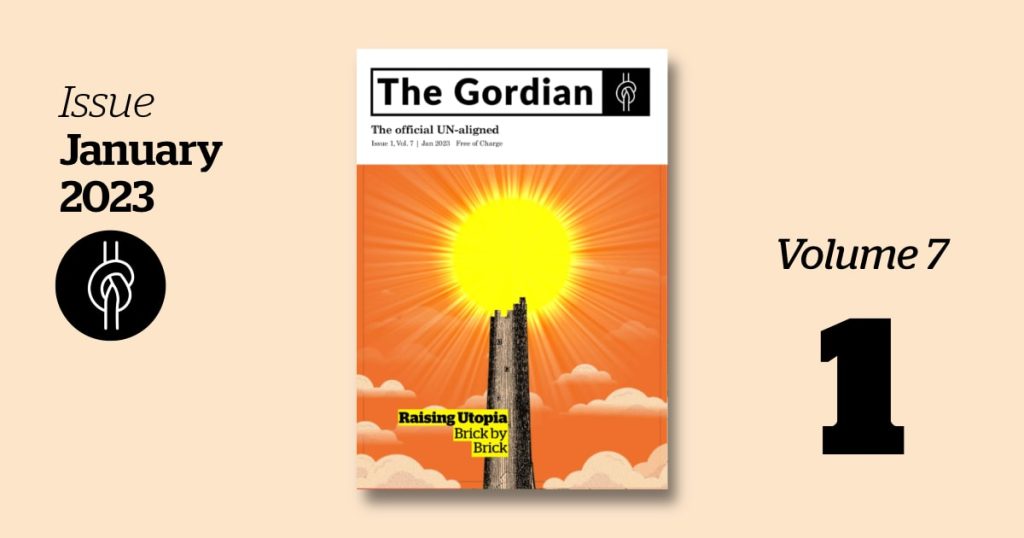
Ring in 2023! Even though it carries with it most of the serious problems associated with 2022, such as war, disease and climate disasters, we hope that at least some of these issues will be dealt with more competently in the next 12 months! We want to be able to report and write about happier stuff… ringing in a brighter and fairer world!
Well, this issue does have a fair amount of good news, as it should, seeing as this and the next few issues will be focussing on Utopia! Our main article is a quirky piece by Ariana Yekrangi which postulates an interview with the representative of a more advanced civilisation; and within this setting, novel visions are juxtaposed to some of our pressing problems. We also announce our UN-aligned Person of the Year, who has been and continues to be a force for justice. Even our UN in Focus pieces have bits of good news, such as some positive action from the UN on Women’s rights. On a personal note, we announce that UN-aligned has won Virtual Internship 2022 Award for Best Intern Feedback, which is a testimony to the mutual support between our dedicated interns and UN-aligned.
The January issue also offers a number of insightful articles by Lukas Pfluger, Adrian Liberto, Dinojah Patkunarajah, Partho and Pradeep Chatteree, Elvira Ineza and Omar Alansari-Kreger as well as our literary article by Alex Liberto and our art piece by Carla Pietrobattista. Of course, we have not forgotten the gallery and the news items, including a quiz that will test your knowledge of some of the events of 2022. Enjoy!
Before you start: This magazine is supported through the voluntary efforts of UN-aligneder from all across the world. If you enjoy it, please help us to take our game up a notch and build on our independent journalism for future years. If you can, please consider supporting the Gordian Magazine with a Patreon subscription. Thank you!
If you are not able to help us financially, that is okay too. Reading the Gordian, telling your friends about UN-aligned and sharing our articles across your social media is enough for us. Remember that you can also write, translate and research for UN-aligned at any point in time, see how you can get involved and contribute to The Gordian.
UN-aligned Wins Virtual Internship 2022 Award for Best Intern Feedback
Editorial

UN-aligned has been recognised for its commitment to providing high-quality internships, earning the Virtual Internship 2022 award in the category of Best Intern Feedback.
UN-aligned, a Finland based non-governmental organisation dedicated to promoting world peace, human rights, animal welfare, and environmental protection, has been awarded the Virtual Internship 2022 award in the category of Best Intern Feedback. The award is a testament to the organisation’s commitment to providing high-quality internships and support to its interns.
According to Victoria Davila, a previous intern at UN-aligned, the organisation has been incredibly supportive of her projects and given her the freedom to cover topics that are important to her, including LGBTQ+ rights, animal rights, and social justice. Victoria also praised the organisation for providing valuable skills and leadership opportunities.
The award is a reflection of the positive feedback received from almost all of UN-aligned’s interns, who gave the organisation a 5/5 rating in their final programme evaluations. This achievement is a testament to the hard work and dedication of the UN-aligned team in providing a supportive and meaningful internship experience for its interns.
UN-aligned is proud to receive this recognition and looks forward to continuing to provide exceptional internships for aspiring students who are passionate about making a positive impact in the world.
If you are interested in taking up an internship with UN-aligned, you may contact us directly in order to discuss this.
The End of an Era: December 2022 in One Look
By Adrian Liberto
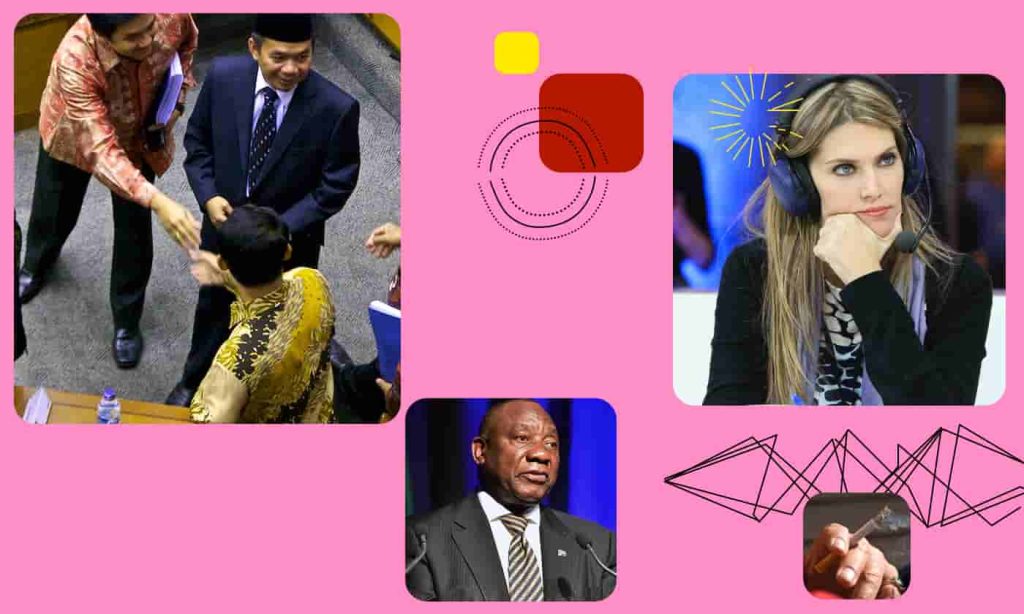
Quickly catch up with everything you have missed in December 2022.
Mick Lynch Named as UN-aligned Person of the Year
Editorial
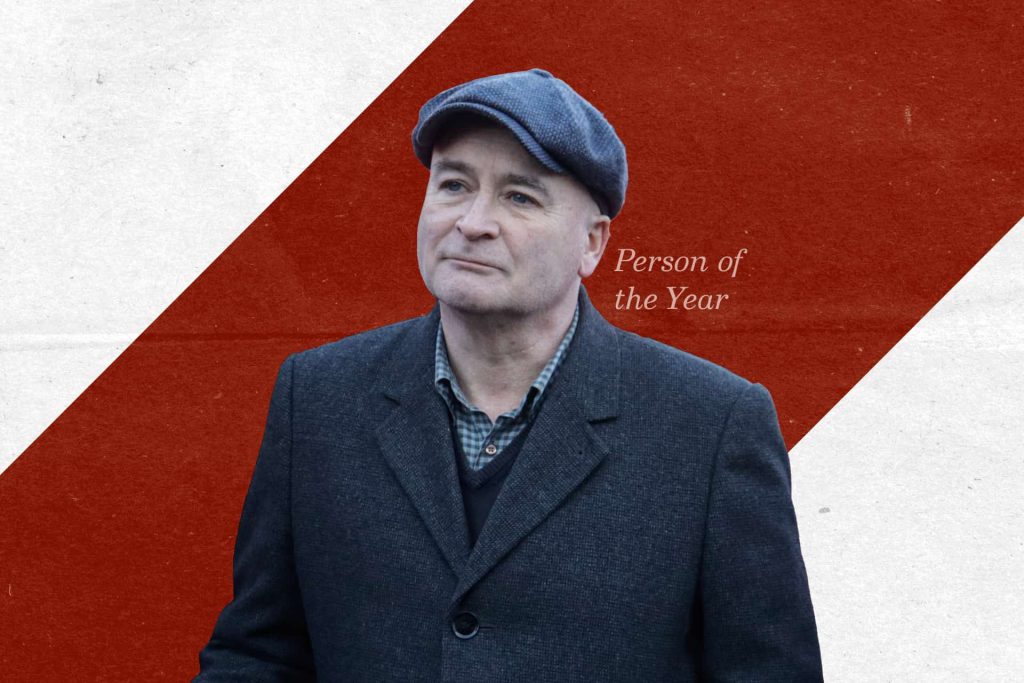
Lynch’s dedication to fighting against injustice has earned him widespread admiration and attention, with many hailing him as a hero for our times.
It is our pleasure to announce that Mick Lynch, the secretary-general of the RMT trade union, has been named the UN-aligned Person of the Year.
This award recognises Lynch’s dedication to advancing the interests of working class people and fighting against issues of economic inequality and injustice. His efforts have earned him widespread admiration and attention, with many hailing him as a hero for our times.
Who is Mick Lynch?
Mick Lynch is the current General Secretary of the British national Union of Rail, Maritime and Transport Workers (RMT), a labour union representing over 83,000 members across various sectors of the transport industry.
Lynch grew up in London with Irish parents who moved to the city as teenagers during the Blitz. Lynch left school at 16 and worked as an electrician and later in construction. He was blacklisted from employment after getting involved in a new union, which was not discovered until two decades later when the blacklisting conspiracy was exposed in court.
As a result, he was not able to find work for years. He became active in the RMT and served as Assistant General Secretary before being appointed acting General Secretary in 2020 and securing the permanent role in 2021.
Mick Lynch and the RMT have been locked in a battle with the government over the issues of pay, job security, and conditions for rail workers. The union has faced threats of compulsory redundancies and cuts to safety-critical infrastructure.

Rail workers, who have faced pay freezes amid a cost of living crisis, are also outraged by the £1 million pay packets of rail executives and the £500 million in private profits made by rail companies since the start of the pandemic.
In negotiations with Network Rail and the Rail Delivery Group, the RMT has called for a “square deal for workers,” including fair pay, good working conditions, and job security. The union has also opposed proposed cuts to scheduled maintenance tasks and increases in unsocial hours, as outlined in Network Rail’s most recent pay offer, which the union rejected as “substandard.”
In addition, the RMT has led a campaign for a pay rise for its members and has worked to ensure that there are no compulsory redundancies before 2025 and no changes to their terms and conditions.
However, despite the fair demands of working people in a cost of living crisis, members of the union, including Mick Lynch, have been accused of holding the country to ransom. This is particularly egregious given the support the strikes have received from the public – a June poll found that 70% of respondents supported the railway workers’ demands for a pay increase that takes into account the cost of living, and only 18% opposed their right to strike.
Laying the blame where it should be
The UK government’s treatment of workers and Unions asking for a fair pay rise has been particularly shameful. Nurses, ambulance drivers, paramedics and other frontline workers have been demonised and blamed for the country’s economic woes, despite their tireless efforts to keep the country running during a global crisis.
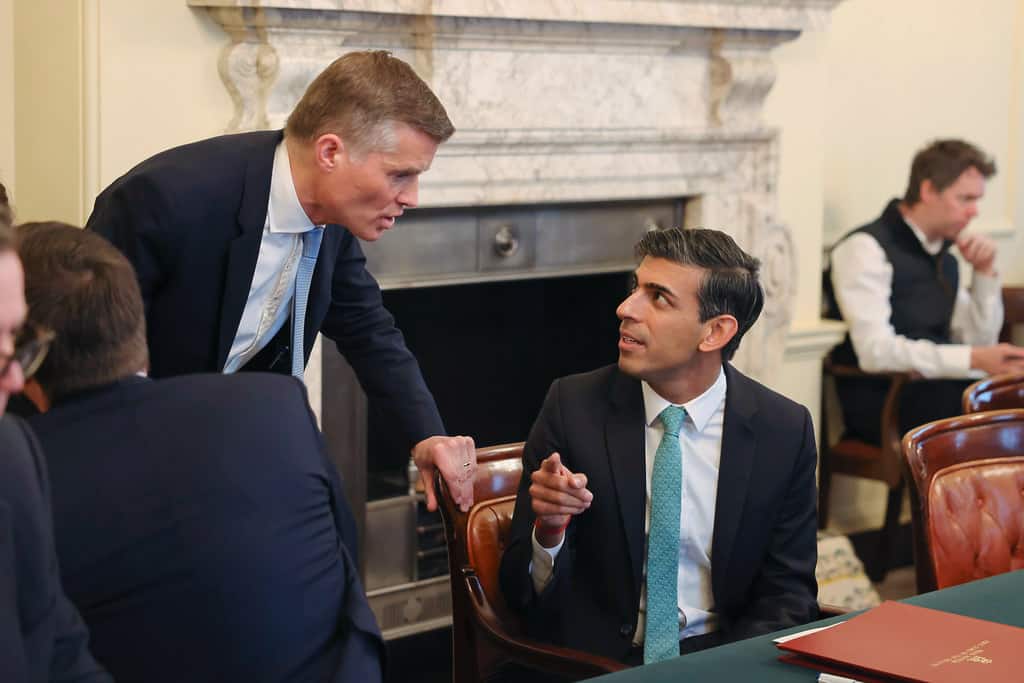
Meanwhile, those who have actually caused the economic damage – such as the former prime minister who blew a £30 billion hole in the economy overnight, the shambolic execution of Brexit that is estimated to have cost the country over £40 billion, the Tory government’s botched test and trace programme which costed £37 billion, the wasteful procurement of PPE resulting in £8.7 billion being wasted and ending up in the pockets of Tory donors and Richie Sunak’s decision to spend £11 billion by overpaying interest on UK debt – are allowed to escape accountability.
The UK government must stop gaslighting essential workers and give them the pay rise they deserve. Mick Lynch and other Unions are not holding the country to ransom; they are fighting for fair treatment and decent working conditions. It’s not too much to ask for after everything they have done for us during the pandemic.
What are labour Unions and why do they strike?
The RMT fights tirelessly to ensure fair treatment and safe working conditions for its members. And when negotiations break down, the union is not afraid to utilise the ultimate weapon in their arsenal: the strike.
Yes, the right to strike is a fundamental one, allowing workers to use collective action, including the withdrawal of labour, as a means of advocating for their rights and interests. It serves as a way for employees to make their voices heard and to exert pressure on their employers to address their concerns, whether they pertain to wages, working conditions, or job security. It is also a show of solidarity and commitment to achieving their goals.
Unions like the RMT play a crucial role in organising and supporting strikes, bringing together workers and coordinating their actions. By going on strike, Unions can draw attention to the issues facing their members and push for change on a larger scale. It is also a way for Unions to negotiate for better pay and working conditions for their members and to resist efforts by employers to undermine the rights and protections of workers.

During times of crisis, such as the ongoing COVID-19 pandemic, Unions have been instrumental in advocating for the needs and rights of essential workers. Mick Lynch, in particular, has become a national figure due to his leadership of the RMT and his ability to clearly communicate the issues at stake in the rail strikes. He has emphasised the importance of the working class coming together and fighting for their rights, rather than waiting for politicians or policymakers to address their concerns.
It is important to recognise the vital role that labour Unions like the RMT and leaders like Mick Lynch play in advocating for the interests of working people and promoting equality and justice in the workplace.
Why Mick Lynch?
Mick Lynch has proven himself to be a true champion of workers’ rights. Not only has he led the RMT in their ongoing fight against compulsory redundancies for fair pay and working conditions, but he has also fearlessly stood up to the rich and powerful, including those in the media who have sought to bully and discredit him and his noble cause.
His clear moral purpose, focus on the tangible experiences of RMT members and ability to articulate the underlying causes behind economic injustice have earned him widespread admiration and respect. It is for these reasons that Lynch deserves to be recognised as the UN-aligned Person of the Year.
Utopian Ideas from an Alien Society: Conversations with the Dengilauns
By Ariana Yekrangi

The first chapter will take you on a journey to discover a utopia where war is abolished and where facts are sacred. But the encounter will raise more questions than answers, as it challenges our understanding of war, humanity, and the future of our world.
Are you ready for an out-of-this-world adventure? Join the Gordian Magazine as we embark on a journey to a distant democracy, where a lone journalist accompanied by a group of earth leaders are hand-picked to represent humanity in a historic meeting with the Dengilauns – extraterrestrial beings from a distant planet, who are establishing a new base on Mars!
Inside the gleaming Dengilaun Embassy on the Moon, we’ll be greeted by dignified and extraordinary creatures with a message of peace. Don’t miss out on this one-of-a-kind adventure: read the first chapter now to inspire you on ways of how to build a better world.
The first chapter will take you on a journey to discover a utopia where war is abolished and where facts are sacred. But the encounter will raise more questions than answers, as it challenges our understanding of war, humanity, and the future of our world. Chapter 2: Will be published in Feb 2023…
Understanding the Subtle Manipulation of News Media in the Age of Pseudo-Enlightenment
By Adrian Liberto

Exploring manipulation tactics and dangers of compliance in the news media.
“It’s the Sun wot won it”
The older generation may remember it well. It was 11 April, 1992. Neil Kinnock and his Labour Party were set to win the general election and the best the Conservatives could have hoped for was a hung parliament. Then, however, The Sun, one of the UK’s right wing tabloid newspapers owned by Australian-American media mogul Rupert Murdoch, launched an aggressive campaign to swing things around… and sure enough it did.
Its election day headline summed up the mood it strove to engender: “If Kinnock wins today, will the last person to leave Britain please turn out the lights.” The Sun had no qualms in crediting itself with the turn of events once the Conservative victory was announced. Its headline was brazenly blunt and coarse: “It’s the sun wot won it”.
Then in the 1997 election (oops!) it did it again, but this time it supported Labour’s Tony Blair. It was likely that Blair was set to win anyway, but The Sun’s volte-face certainly contributed to the landslide victory that followed.
None of this is a surprise, of course. We all know the relentless power of propaganda. The tragedy, however, is that few of us care. Moreover, this propaganda is not only generated from the press and media outlets; it insidiously targets us from every quarter, including culture, religion and family values.
Goodness is an ethical choice, an informed choice, and without choice, there is only compliance.
Everything we accept without question is a form of brainwashing. It need not necessarily be bad, but unless we question it, it will certainly not be good either. Goodness is an ethical choice, an informed choice, and without choice, there is only compliance. Indeed, the same applies to evil. Burning a heretic or roasting a pig are harmful, but not necessarily bad, because the actor may be functioning without judgement, almost like an automaton.
Compliance is beyond the scope of good and evil, or more accurately, below it. If there had to be a place where compliant people go, it would have to be a sort of inconsequential Limbo charged with indifference and stagnating habits. Nevertheless, this ignorance is not bliss, because in a way, compliance is the greatest sin there is. It involves reneging our higher selves for a zombie-like existence.
Waking up from a routine existence and taking our moral responsibilities seriously is a challenge many people would rather avoid. The words of the Cold Genius in Purcell’s King Arthur (libretto by John Dryden) spring to mind:
“What power art thou, who from below Hast made me rise unwillingly and slow From beds of everlasting snow? […] Let me, let me freeze again to death.”
Yes, there is a certain warmth in freezing to death. It means not having to call into question our faith, our way of life or our very understanding of who we are. The fact is, however, that we comply at our own peril. The peril of a fictional life as opposed to a free, creative and truly ethical one.
So, if you never questioned your religion, your food, your sexuality, your prejudices, the chances are you may be one of these characters destined to that Limbo of thraldom.
Manipulation Tactics
Manipulation comes in all shapes and sizes, from history books to monuments, and tackling these sources all at once may prove daunting. In this article, I will therefore focus on one aspect of manipulation, namely, that exercised by news outlets.
There are a number of ways that news outlets can manipulate information and being aware of these is essential in order to avoid being moulded into somebody else’s pawn. Here are some of them.
1. Selective reporting
This involves leaving out stories altogether or only choosing to report on certain aspects of a story, for ulterior motives. The most obvious motive would seem to be “selling” the product by giving people what it is they want to hear about. This rarely involves what is important from a developmental point of view. What B Franklin wrote in 1997 is still true today:
“Journalism’s editorial priorities have changed. Entertainment has superseded the provision of information; human interest has supplanted the public interest; measured judgement has succumbed to sensationalism; the trivial has triumphed over the weighty; the intimate relationships of celebrities, from soap operas, the world of sport or the royal family, are judged more ‘newsworthy’ than reporting of significant issues and events of international consequence. Traditional news values have been undermined by new values; ‘infotainment’ is rampant.”
It would be naive to imagine that this desire to meet demand was the only criterion, however. Often, that is just the bait. In fact, this is where reporting becomes more sinister, with political and other agendas coming into play.
A good example of this bias is the coverage Iran’s human rights abuses are currently receiving in many media outlets. Indeed, these outrageous abuses cannot be ignored and clearly must be covered. The problem is that only a few doors away, Israel is committing equally abhorrent abuses and killing Palestinian protestors on a regular basis. Where is the coverage? Where is the outrage?
We are fed what the media wants to feed us, even when we are careful to read the “right” papers or follow the “trustworthy” channels. Nor is politics the only motivator. Sponsors and bribes are also huge incentives for news agencies to serve up what is not necessarily in society’s best interest.
If it happens in the European Parliament, you can be sure it happens in the papers
These problems were highlighted in the seminal work by Noam Chomsky and Edward Herman titled ‘Manufacturing Consent: The Political Economy of the Mass Media’, which was first published in 1988.
The work introduced and presented the propaganda model in great detail. The argument the work puts forward is that media practitioners are compromised by their subservient role within power relationships and that those in positions of power use the media industry to advance their own interests, be they political or economic. In other words, media outlets “serve and propagandise on behalf of the powerful societal interests that control and finance them”.
Incomplete reporting is even more dangerous as it creates a false narrative. There is a charming painting by the 16th century artist Giovanni Francesco Caroto of a boy holding a child-like drawing of a man. Selective reporting in this sense would be like presenting the drawing as a Coroto without its actual context.
In journalism it happens repeatedly, particularly when covering the deeds of politicians or activists, focussing on a particular aspect in order to gloss over or demonise depending on the intended standpoint.
Activists, for example, may be depicted as enemies of the state or as hotheads who have no sense of proportion, by zooming in on a particular aspect of their campaigns. Greta Thunberg is a prime example of this skewed form of reporting, with some papers focussing on her alarmism rather than the overall message.
An August 2019 opinion piece in the New York Times by Christopher Caldwell, for instance, accuses Thunberg’s “radical approach” to climate activism of being “at odds with democracy”. Meanwhile, of course, the earth is going to pot!
2. Slanting and Spin
These tactics involve presenting information in a way that is favourable to a particular perspective or agenda or presenting information in a way that is designed to persuade or influence readers or viewers towards a particular point of view.
This can involve using emotive language or images, or presenting information in a way that is designed to appeal to certain emotions or biases.
An often-cited example of this is offered by the reporting on the aftermath of the Katrina hurricane in Louisiana in 2005. There were two photos of people trying to salvage food from the floods, one from Associated Press the other Agence France-Presse/Getty Images. The caption for the first photo referred to “looting”, while the caption for the second spoke of “finding”.
The different choice of language betrayed a subtle prejudice since the first photo showed a young black man, while the second a white couple.
A casual reader would hardly notice the innuendo, especially if the images are seen separately, but the insidious prejudice can nonetheless be subconsciously absorbed. A diet of such subtleties, and we can be moulded.
As a teacher, I used to love asking my students this riddle: “There were three Germans marching down the street; one was the father of the son of the other. Who was the other?”
Even though the answer should have been quite obvious, most students generally came up with a list of male candidates: grandfather, uncle, brother… Why? Because at the time we were still being fed a diet of WWII war films, so that German conjured up an image of a soldier.
Nowadays, the riddle would probably be meaningless, because times and perceptions have changed. Yet, think: how many of these preconceived ideas are we carrying with us, gently encouraged by the media we absorb?
3. Provincialism
There are three geographic types of news: local, national and international. The former two are sometimes so exclusive that international news hardly gets a look in, but international news outlets also tend to have a limited and insular outlook depending on national makeup of the agency, the languages used to broadcast in and the targeted audiences.
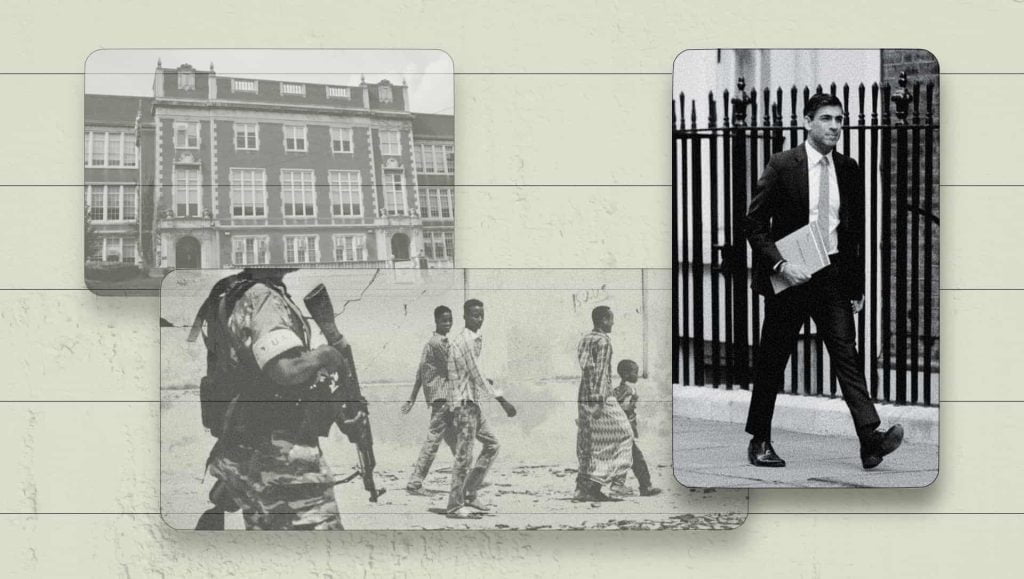
Sadly, the rule is that unbiased internationalism is rarely the case. The ploy of “divide and rule” also works when it comes to keeping people in manageable mindsets.
Ideally, one’s outrage at an act of injustice in Russia or compassion for the victims of a disaster in Bangladesh, would not be that different to what it would be for a national or local event, except that one may feel the impact more directly and be able to do more about it if it were closer to home.
However, the media generally works against promoting an international outlook and operates in ways that are intended to keep us inward looking. A girl goes missing in Europe in 2007 and the media is still talking about it; a 12-year-old Palestinian boy is shot by Israeli forces in 2022 and most people would not even have heard about it.
Despite there being certain guidelines on what constitutes newsworthiness, newsrooms follow their own subjective criteria. This can range from the elements relating to the propaganda model to simple technicalities, such as the “visualness” of a story.
Ultimately, however, these criteria are generally biassed towards a safe provincialism that is more easily manipulated. This is easy enough to verify: just take your preferred daily newspaper, count the news articles and then see how many of those relate to international events.
4. Misleading headlines and downright lies
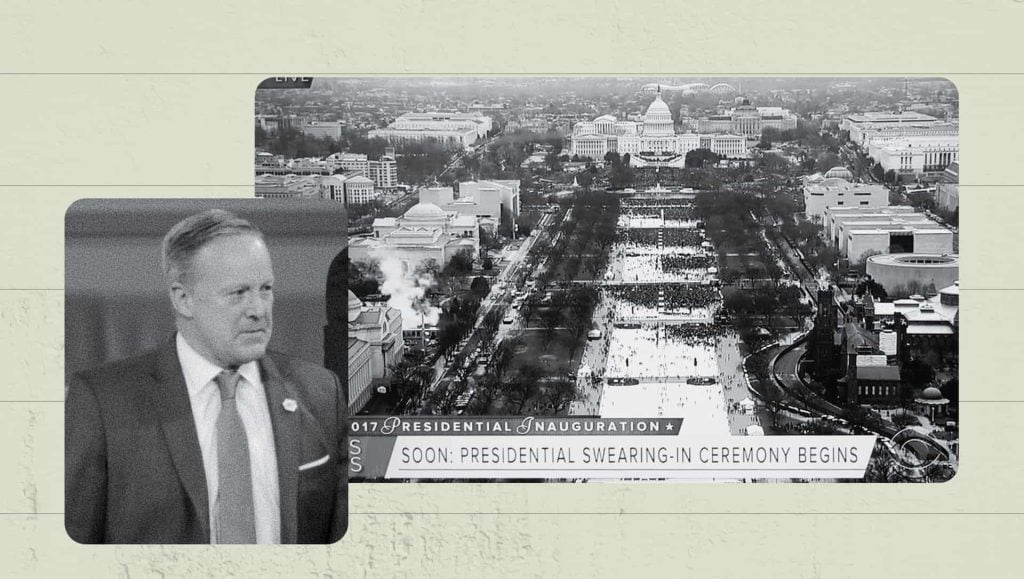
Distorting the facts is of course the most shameless way of abusing the media. When White House Press Secretary Sean Spicer grossly exaggerated the attendance numbers of Donald Trump’s inauguration as President of the United States, Counsellor to the President, Kellyanne Conway, defended him during a Meet the Press interview on January 22, 2017, by saying that Spicer was merely conveying “alternative facts”.
Yes, we are fed many of those. In countries with oppressive regimes, it is a staple.
Take Putin’s Russia, for instance. It is as though we are back to Nazi Germany, only that access to information was much more limited then. In the 21st century, even in Putin’s Russia, there is no excuse when it comes to allowing oneself to be brainwashed with false propaganda.
We can witness that smugly as we sit on our high horse, or we can observe while listening to the alarm bells that question our own independence of thought.
“Alternative facts” are all around us. They are like a plague; and just as we took countless precautions to avoid being infected by the coronavirus, we should be equally cautious about being infected by falsehoods.
5. Where media can meet enlightenment
It is important to be aware of these tactics when consuming news and to seeking out ways to promote our freedom of thought. Here are some ideas on how to safeguard ourselves from the dangers of consuming media information.
Ownership and Funding of Media Outlets: Know who owns and funds the news outlet in question. Al Jazeera, for instance, is owned by the Al Jazeera Media Network, which is owned and funded by the monarchy government of Qatar. Whilst much of their reporting is of a high quality, do not expect them to be unprejudiced when reporting on the issues relating to the 2022 World Cup or LGBTQ+ abuses, for example.
Trust the Original Source: If possible, go to the source of the matter when this is likely to be more accurate. A report on a report, for instance, is never as good as the original report itself.
Diversify: Get your news from various sources, especially when bias is more likely.
Also, do not rely on news agencies alone; dig deeper. Large organisations, like the United Nations or NASA, have their own news pages, so if you are interested in specific issues, check related websites. The same applies if you are interested in a particular continent, area or country. If you are looking for Central American news, for example, you may have to wait for months to read a story from there from your usual sources, but by visiting government websites and online national newspapers or outlets, you will no doubt be kept more up-to-date.
Fact-check Your News: Fact-check, particularly if it smells fishy. There are various websites that can help with this, but some personal research can be just as effective.
Question the Motives: Keep an open mind and question the motives of the reporter and add a pinch of salt where necessary.
Beware of Headlines: Many of us are too busy to go into the details of an article and tend to skim instead, sometimes satisfying ourselves with a mere headline. This can be dangerous as headlines are often misleading and designed to draw our attention, while clarifying only later.
Avoid Propaganda and Refine your Ethics: If you live in an authoritarian State, the chances are that your access to media will be restricted. Apart from trying to find alternative sources of information as safely as possible, your priority will be to avoid being brainwashed by aggressive state propaganda. Refining one’s ethical principles is one of the surest ways to avoid being caught in the propaganda web. Certainly, abiding by these is another matter, particularly when our lives or livelihoods, or those of the people closest to us, are at risk.
Prevent Compassion Fatigue: Much of the time we consume news that is tragic and heart-breaking. One therefore needs to be aware of “compassion fatigue” and not allow our sensitivities to be hardened, as this can lead to debilitating indifference.
Read more: Compassion fatigue: How to turn your compassion into positive action
Turn your Knowledge into Action: All the knowledge in the world can be useless if we do nothing with it. I may be well aware of the extreme cruelty of the meat and dairy industries and the fact that it is innocent, sentient, loving and often intelligent beings that are the victims, but if I continue to support the abuse through my lifestyle, then that information is pretty useless. In fact, it is more than just useless: it is damaging in as much as it dulls our compassion towards less powerful beings. The same applies to all forms of injustice. Ultimately, we should all be activists; anything less is collusion.
The Case for Permanent Continental Members at the UN Security Council
By Omar Alansari-Kreger
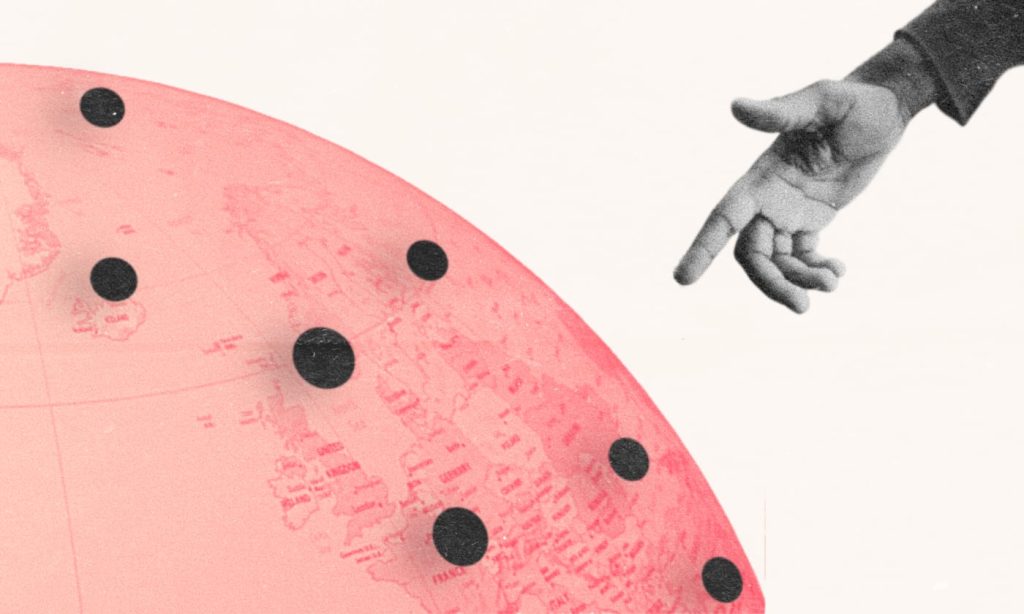
Empowering continents and ensuring lasting peace – a case for permanent continental members at the UN Security Council
Perhaps the greatest impediment to world peace is the United Nations Security Council itself. This is felt by the power of the mighty veto held by each of the five permanent members.
The image of the Security Council is that of a “club of superpowers” each prioritising its own national interests over the other. In the rule of the jungle, realities of realpolitik assume total precedence where “might is right decision theory” rules supremely.
This has reduced the rule of international law to arbitrary geopolitical gerrymandering. This is the legacy of the Security Council, but can it be saved, let alone reformed, to make a better world possible?
History of Security Council Reform
Reform of the Security Council was not truly prioritised until the end of the Cold War as the international community transitioned from a bipolar world to a multipolar one. The most significant push for reform began in 1992 under the tenure of Secretary General Boutros Boutros-Ghali by proposing an expansion of the Security Council’s membership.
Beginning in 1996, the Italian sponsored “Uniting for Consensus,” also known as the Coffee Club, proposed adding new permanent members of G4 nations to include Brazil, Germany, India, and Japan to the Security Council.
Little time was wasted to counteract this proposition by non-G4 nations. Under Islamabad’s leadership, Pakistan would replace India, Mexico, Columbia, and Argentina were to replace Brazil, and Japan would be exchanged for South Korea.
This was proposed to break the Global North’s monopoly of power on the Security Council by affording “deferential preferentiality” to rapidly developing nations in the Global South.
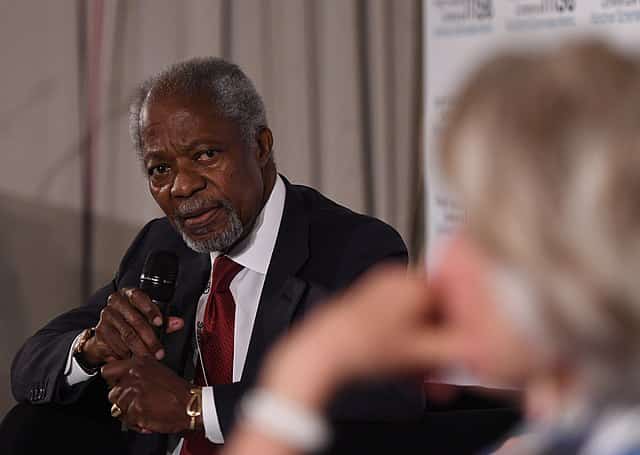
In 2005, Kofi Annan proposed his “2005 Plan” to increase permanent Security Council membership to 24 nations including the existing club of five.
As an adherent to Annan’s philosophy on Security Council expansion, Ban Ki-Moon acknowledged the need to increase membership as something long overdue to better reflect the multipolar diversity of the world during his tenure as secretary-general.
This has given rise to Security Council outsiders questioning the “propositional feasibility” of such solutions against the backdrop of our increasingly estranged multipolar reality.
Do they go far enough or are they simply uninspired solutions designed to tease and appease more increasingly assertive nations eager to even the geopolitical playing field?
Security Council alternatives
Why not explore the “supranational possibilities” for geopolitical union as defined by continent?
Instead of five permanent members defined by national interest, there would be eight permanent continental members. A new and reformed Security Council would be represented by continental blocs turned supranational unions for purposes of maximising equilibrium in the actual distribution of international law.
This project would be hatched under a centralising focus to deny the possibility of war or military aggression between nations.
The inspiration supporting the architecture for “supranational continentalisation” is derived from the European and African Unions respectively in addition to the Union of South American Nations.
Considering the vast ethnologic diversity and geographic enormity of Asia, two supranational unions would be required to represent the continent explaining why a renewed and restored Security Council would have eight permanent members.
At present, the Asian Cooperative Dialogue and the Association of Southeast Asian Nations are Asia’s continental equivalents to supranational unions.
Although arguably counterintuitive, Antarctica would be represented on a rotating four-year basis by nations with the greatest foreign assets on the continent. This would be measured by metrics of scientific research, economic activity, and military defense as defined by spheres of influence.
Considering most nations active in Antarctica are already world powers, the supranational body overseeing the continent would work separate from their counterparts already on the Security Council.
Civilianise governance instead of militarising it
Rather, they would be represented by a leading scientific agency specialising in Antarctica from the relevant national superpower holding the rotating seat to diversify interests at the council to avoid overlap between more traditional spheres of diplomatic and military influence.
For example, Washington could entrust the United States Arctic Research Commission to represent Antarctica under such “associative supranational premises.”
The thinking is to inspire a diversification in supranational governance in underrepresented and marginalised areas to effectively civilianise governance instead of militarising it.
This experiment can determine if a separation of “supranational powers” is possible when applied differentially beyond foreign policy maxims at the Security Council.
By recognising supranational organisations like the European Union as traditional state actors, while serving as permanent members of the Security Council simultaneously, the next great evolution in international relations can be achieved delivering a more representative and balanced world of global governance.
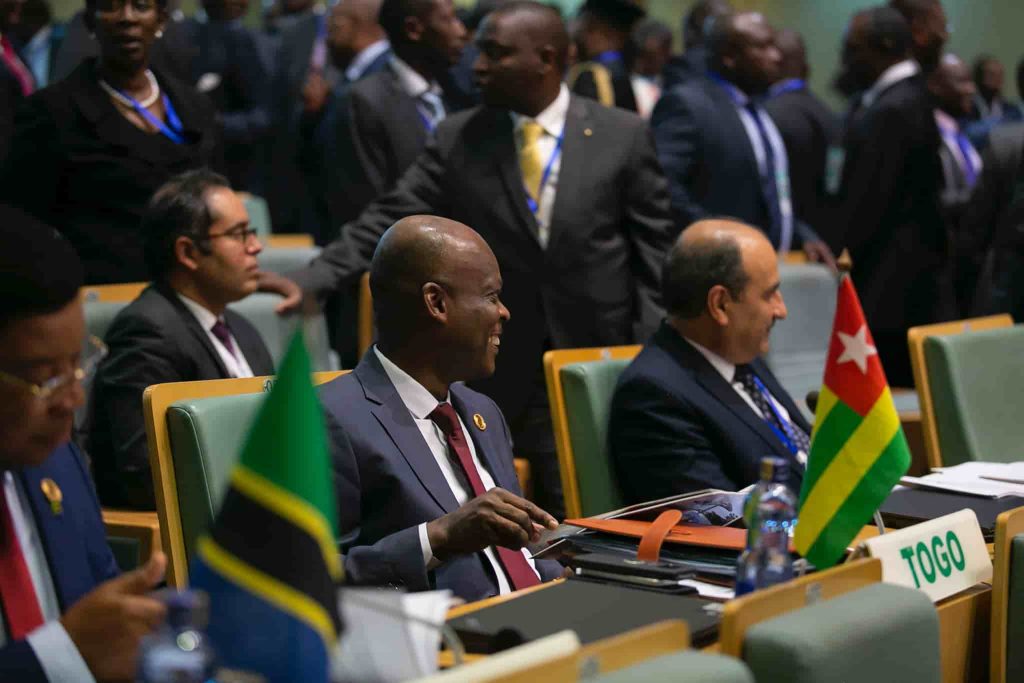
Nonetheless, it may prove necessary to reinvent the wheel considering controversies and low confidence in existing supranational organisations like the African Union.
This new existential basis for the Security Council can possibly exceed capacities and known capabilities of pre-existing supranational organisations designed primarily to be “continent centric.”
Thus, propositions for a potential “African Geopolitical Union” can be considered as a templated standard for such an experiment made in the name of supranationalism at a renewed Security Council for a restored United Nations.
As always, the task of sourcing leadership for such supranational organisations will prove challenging if not preventative or downright exhaustive, but the end results may definitely prove worth it in the long run.
The Montreux Declaration: An Alternative Vision for World Peace
By Lukas Pfluger
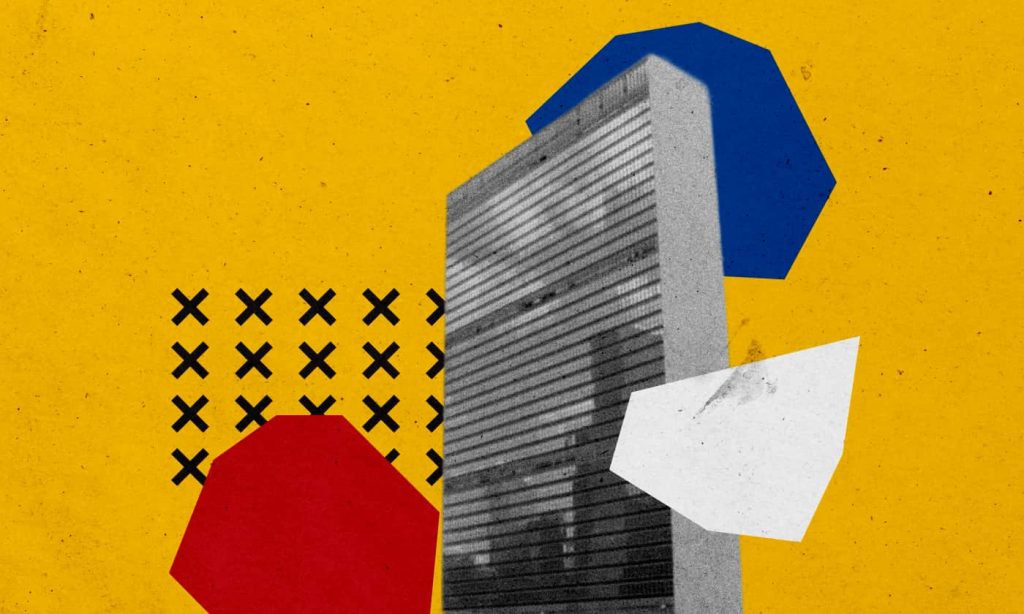
The Montreux Declaration presents a coherent alternative to the UN’s design flaws for achieving genuine world peace, argues Lukas Pfluger.
Iran’s Removal from the Commission on the Status of Women: Change in Membership Standards?
By Dinojah Patkunarajah
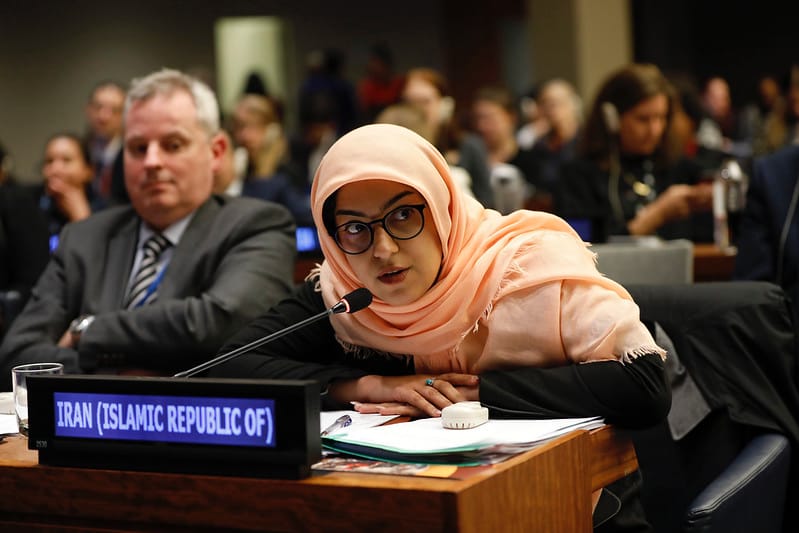
The UN has removed Iran from the Commission on the Status of Women for violations against women’s rights, but many countries with poor records remain on the council.
In a decision that is being celebrated as a victory for women’s rights, the UN’s Economic and Social Council has removed Iran from the Commission on the Status of Women (CSW). The country’s tenure, meant to last until 2026, was cut short in response to Iran’s repeated violations against the rights of women, including the violent suppression of protests demanding justice for the death of Mahsa Amini, a young woman who died in police custody last September.
The resolution to remove Iran from the CSW, introduced by the United States, received 29 votes in favour, with eight against (Bolivia, China, Kazakhstan, Nicaragua, Nigeria, Oman, Russian Federation and Zimbabwe) and 16 abstentions. The resolution expressed “serious concern” over the Iranian government’s actions, which have “continuously undermined and increasingly suppressed the human rights of women and girls,” often with the use of excessive force.
While the removal of Iran from the CSW is a step forward, it’s important to note other countries with similarly poor track records on women’s rights remain on the Council. Afghanistan, Iraq, Somalia, Congo, and Bangladesh rank amongst the bottom 20 countries on the “Women, Peace and Security Index” (WPS), yet they continue to serve as members. In comparison, Iran ranks 125 out of 170 countries.
Should Afghanistan be next?
The women of Afghanistan are facing “unfathomable restrictions” on their rights, according to Volker Türk, the UN’s High Commissioner for Human Rights. The Taliban, who are the de facto authorities in Afghanistan, have recently issued a decree banning women from working in non-governmental organisations (NGOs), as well as suspending university education for women and secondary schooling for girls. These actions will deprive women and their families of their incomes and their right to contribute to the development of their country.
NGOs and humanitarian organisations provide vital services for many people in Afghanistan, including food, water, shelter, and healthcare. They are often staffed by women, including in leadership roles, and are essential partners for the UN and other agencies in delivering humanitarian and development programs throughout the country. The ban on women working in NGOs will significantly impair, if not destroy, their ability to deliver essential services, said Türk. The ban will also increase the vulnerability of women to gender-based violence.
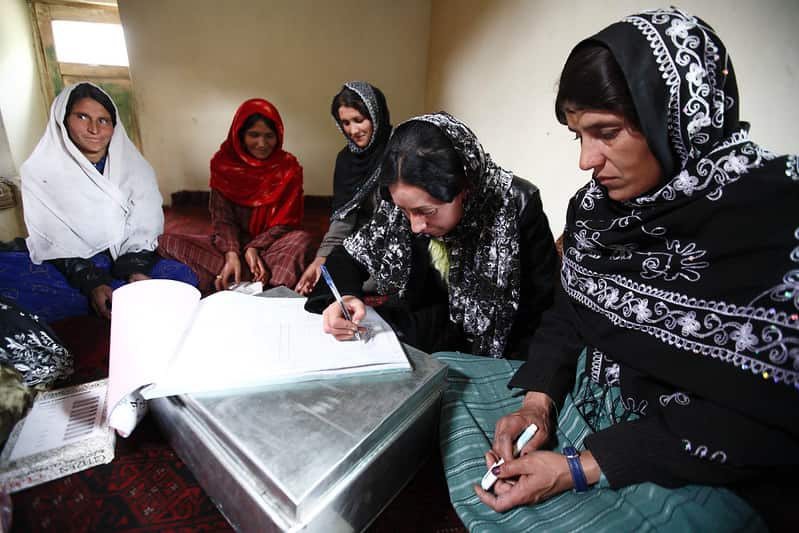
The Security Council has also voiced its concern over the latest Taliban restrictions on education for women and girls, stating that they will have a “significant and immediate impact” on humanitarian operations in Afghanistan and the delivery of aid and health work. The Council reiterated its full support for the UN Assistance Mission in Afghanistan and called on the Taliban to immediately revoke these policies and respect and protect the rights of all women and girls.
The situation in Afghanistan highlights the need to continue protecting the rights of women and girls and holding governments accountable for their actions. The country’s poor track record has already led to it losing its bid for a seat on the UN’s Human Rights Council.
The UN must take a stand for women’s rights
The UN’s removal of Iran from the CSW is a victory and serves as a warning to other countries who continue to violate the rights of women, that they too will face consequences. However, this is only the beginning.
The CSW has the potential to create meaningful and enduring change for women and girls around the world, but this can only happen if it is composed of member countries that are committed to upholding and implementing the commission’s mandate.
It is time for the UN to send a strong message to countries with abysmal track records on women’s rights, starting with the removal of Afghanistan, and other countries with poor records, from the CSW.
Bye bye United Nations: A Jolly Good Move!
By Adrian Liberto
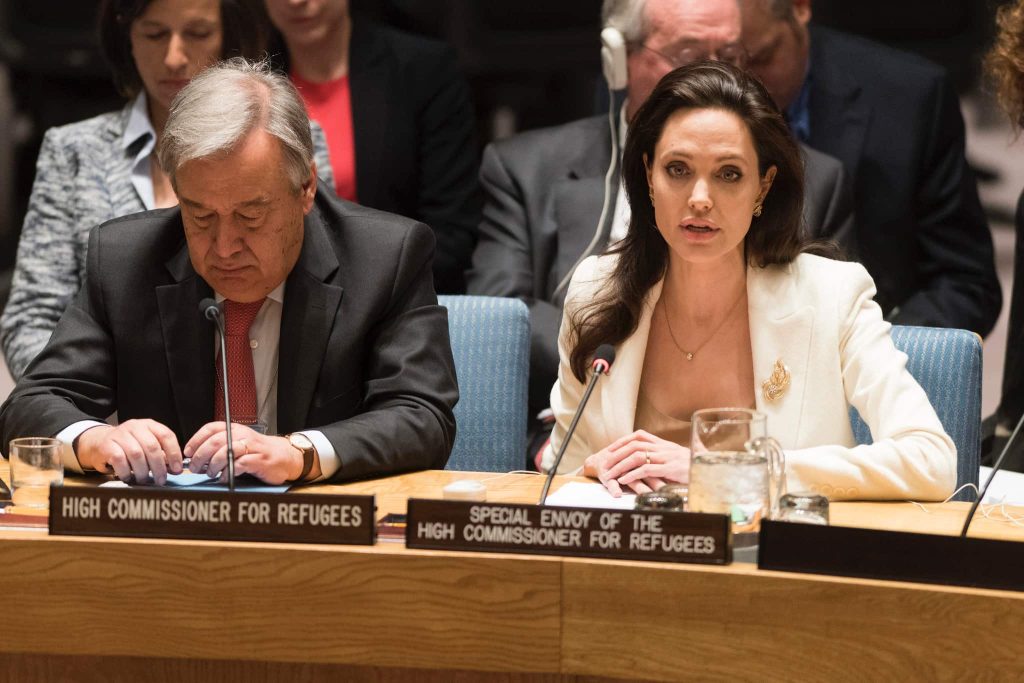
American award-winning actress, film director, producer, and humanitarian, Angelina Jolie, has decided to quit her role as a Special Envoy to the United Nations refugee agency, the UNHCR, citing a desire to “work differently”.
Ms. Jolie has worked with the UNHCR since 2001, and has been a Special Envoy for the organisation since 2012. Her role involved building awareness and support for refugees and highlighting the need for urgent action to be taken in order to tackle issues relating to the serious events that force people to flee their homes, such as conflict and climate change.
In a joint statement with the UNHCR issued on 16 December 2022, Ms. Jolie said:
“I will continue to do everything in my power in the years to come to support refugees and other displaced people. After 20 years working within the UN system I feel it is time for me to work differently, engaging directly with refugees and local organisations, and supporting their advocacy for solutions”.
Ms. Jolie’s frustration at the pathetic international response to these issues has been brewing for a while now. Speaking on the occasion of World Refugee Day on 20 June 2021, she lambasted the institutions in no uncertain terms:
“We have to wake up to the track we are on globally, with so many conflicts raging and the very real possibility that climate change will force tens if not hundreds of millions of people to have to leave their homes in the future, with no possibility of return.”
“It is erratic, it is unequal, it is built on inherited privilege, it is subject to the whim of political leaders, and it is geared towards the interests of powerful countries, including my own, at the expense of others.”
It is not that we are at a breaking point – this is broken. The way we as an international community try to address conflict and insecurity is broken.
Angelina Jolie
Clearly, the situation has deteriorated even further since then owing to an intensification of climate disasters and the war on Ukraine, with its rippling effects around the world.
A “broken” system, however, will only make matters worse; while the UN’s hands are tied by the powerful States that pull many of its strings. Of course, by working on her own initiative, Ms. Jolie will only be able to skim the surface of the challenges we face, but her bold move will certainly help in highlighting the need for better international institutions.
Meanwhile, Ms. Jolie’s decision was backed by Filippo Grandi, the UN High Commissioner for Refugees, who thanked her in the same joint statement mentioned above, adding:
“After a long and successful time with UNHCR, I appreciate her desire to shift her engagement and support her decision. I know the refugee cause will remain close to her heart, and I am certain she will bring the same passion and attention to a wider humanitarian portfolio. I look forward to our continued friendship.”
The Journey of Immigrants in America: Experiences From Within
By Elvira Ineza
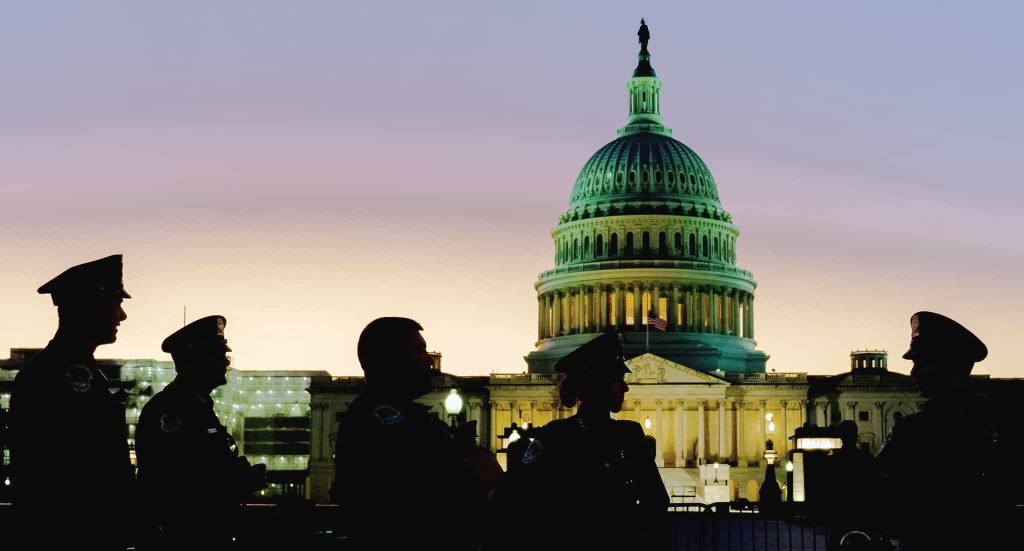
Personal interviews with Kevin, an immigrant from Rwanda, and a former employee of the International Rescue Committee, uncover the complex realities of immigration in America.
Where are Sri Lanka’s Missing Children?
By Dinojah Patkunarajah

13 years after the end of the Sri Lankan civil war, mothers of the disappeared are still searching for answers and justice.
“Remember when you and Akka [older sister in Tamil] used to skip dance class by hiding in the storage shed in the backyard?”, reminisces my Aunt. “We would spend ages looking for you, thinking you both had gone missing.” It’s been 13 years since the end of the Sri Lankan civil war and my cousin went missing. My aunt, like many mothers in Sri Lanka, is still searching for her daughter or at least answers as to what happened to her. Answers she is unlikely to ever find.
Sri Lanka has the world’s second-largest number of enforced disappearances; formally recorded at 6,259. However, an Amnesty International report estimates the actual number of disappearances since the 1980s is upwards of 60,000 people. Mothers of the disappeared, like my aunt, have been protesting since 2017, demanding answers and justice from the state and international bodies such as the UN Human Rights Council. Despite several domestic and international mechanisms in place, the Sri Lankan government has repeatedly failed to provide answers.
Aftermath of the Civil War
The civil war in Sri Lanka lasted from 1983 to 2009 and was fought between the Sinhalese majority government and the Liberation Tigers of Tamil Eelam (LTTE), an armed Tamil separatist movement seeking independence for the northern and eastern part of the country. A considerable number of young Tamil people went missing during the conflict, but even more did after the fact. Anyone with ties to the LTTE “were handed over to the Sri Lankan army who said they will make inquiries and pardon them”.

My cousin was one such individual. Like many disillusioned Tamil youth, my eighteen-year-old cousin began supporting the LTTE in the early 2000s against her parents’ wishes. The last time my family communicated with her was just before the end of the war, in early 2009. “Her connections with the movement put a target on her back”, says my aunt. “At the time, a lot of people went missing in white vans. We knew it was the government trying to nip any resurgence of the movement, but we were all too scared to do anything. In case we would be the next to go missing.”
Many families of the victims believe the disappearances were state-sanctioned, in the name of antiterrorism operations. Government officials deny this narrative, with some going as far as to make baseless claims that the disappeared individuals are secretly living abroad.
However, as a party to the International Convention for the Protection of All Persons from Enforced Disappearance (ICPED), the Sri Lankan government is required to provide answers. In light of international pressure to hold accountability, in September 2009 the government announced it would establish state processes to determine the truth, provide justice and prevent the recurrence in regards to war crimes, including enforced disappearances, perpetrated during the conflict. A Commission for Truth, an Office on Missing Persons and an Office for Reparations were established as a result.
Office on Missing Persons (OMP) & Other Initiatives
My cousin’s disappearance is one of 14,965 civilian reports the OMP has received since its establishment in 2017. In the past 5 years, we have received little in way of communication, let alone answers, from the office. This is the case for most who filed reports.
According to Brito Fernando, Chair of Families of the Disappeared, “The government didn’t have a huge political interest in the disappearances issue. They set up the OMP only because of international pressure.” This becomes very evident due to the office’s limited progress and inability to win the trust of the victims’ families. The lack of trust is a result of the office being led by individuals who undermine its independence by actively seeking to exonerate perpetrators and not recognise the state’s involvement in the disappearances.
Until formal reparations could be made, the OMP was providing 6,000 LKR (30 USD at the time) per month to a few families who were facing economic hardship as a result of the families’ sole breadwinner disappearing. These payments were stopped in 2022 by President Gotabaya Rajapaksa’s government before he was forced to step down.
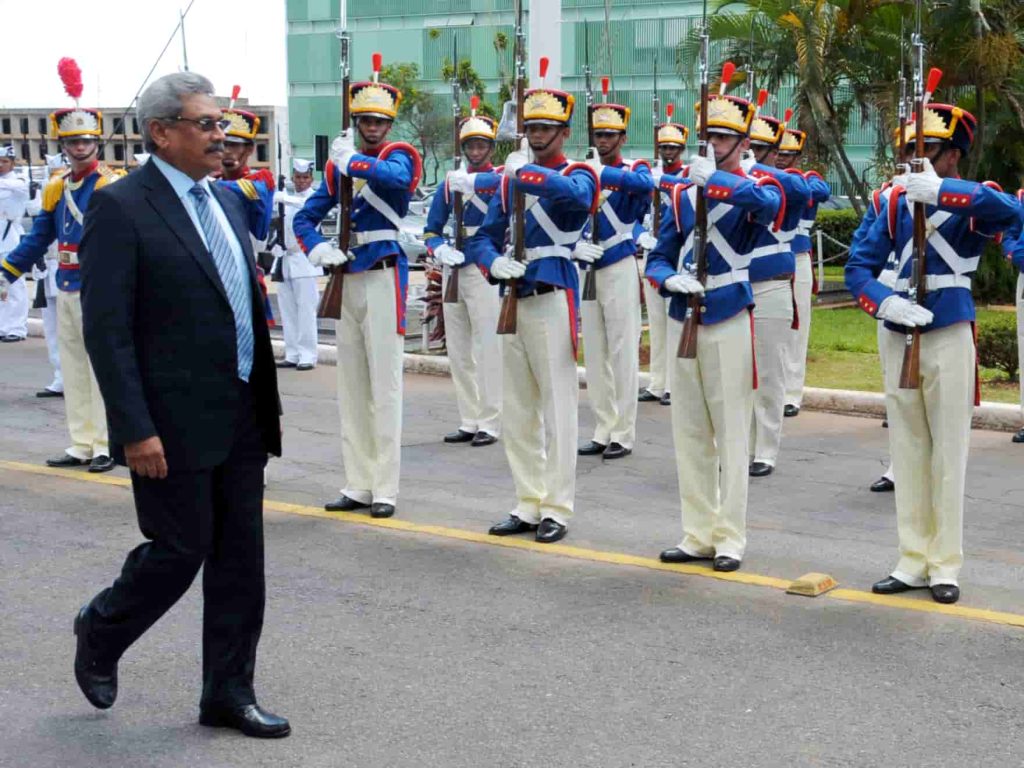
The past government also stopped issuing Certificates of Absence in lieu of Death Certificates. Despite a change in leadership, families are being pressured by the current Ministry of Justice to stop protesting and asking for answers. Instead, they are being coerced to accept 100,000 LKR (around 270 USD today) and a Death Certificate as part of the new “Access to Justice” Programme.
“I don’t want a death certificate or money. I just want to know where my daughter is” was my aunt’s response to the government’s recent initiative. Unfortunately, many families, hit hard by the pandemic and the country’s current dire economic situation, are left with little choice but to concede to the government’s pressure.
UNHCR Resolution
The state’s recent attempts to close as many of the OMP’s cases as possible is a direct result of the UNHRC’s resolution 46/1 adopted on March 23, 2021 which drew attention to the continued lack of accountability and answers from the Sri Lankan government in regards to what took place during the war. The resolution gives the OHCHR new staff, more powers and a $2.8 million budget to look at Sri Lanka’s war with a possibility of future prosecutions. A comprehensive report is expected to be released by 2024.
The Sri Lankan Foreign Minister, however, stated the resolution lacked authority and “was brought by countries supported by Western powers that want to dominate the Global South”.
We are yet to see whether this resolution will bring forth any tangible progress in the way of answers for the families of the disappeared. So far, the opposite has happened, with the government trying to make the issue itself disappear through monetary compensation. 13 years on, mothers like my aunt are still waiting for answers. With time, my aunt has reluctantly accepted that her wait may in fact be futile. “They say no news is good news. Maybe not knowing is also for the best. This way I can pretend she’s in a far off land, living happily.”
4 Ways to Combat the Negative Impacts of Global Warming on Biodiversity
By Partho Pratim Chatterjee

A multifaceted approach to mitigating the negative impacts of global warming and human activities on ecosystems
The contemporary phenomena of global warming has created a “Hothouse Earth” and has wreaked havoc on pristine ecosystems. The melting of glaciers exposes vast swathes of marine water to atmospheric carbon dioxide, lowering pH from alkaline values and threatening the survival of corals and other marine organisms.
In addition, the indiscriminate felling of certain species of flora and the poaching of certain species of animals for medicinal purposes exacerbates their extinction. Clearing tropical rainforests for agriculture also strips the planet of its carbon sinks and lungs.
1. Protecting Coral Reefs
To address these issues, a combination of eclectic approaches is needed. One strategy is to implement equitable legislation in littoral areas to protect coral reefs, which are known as the “rainforests of the oceans” due to their rich biodiversity. Coral reefs are also threatened by bleaching from industrial chemicals, excessive exposure to ultraviolet radiation, increased ocean water temperatures, and the use of trawler boats.
In addition to legislative measures, techniques like biorock accretion can be employed to restore lost corals. This process involves using floating solar photovoltaic panels to power the growth of a living coral implanted into a coral skeleton.
2. Safeguarding Bee Populations
Another strategy is to promote the use of biopesticides, such as those derived from neem, in agricultural management in order to protect bee populations. The indiscriminate use of chemical pesticides can inhibit the reproduction of bees and negatively impact the reproduction of many species of flowering plants that depend on bees for pollination.
In addition to promoting biopesticides, local authorities can distribute bee boxes to encourage apiculture as a small-scale industry in forest areas, providing a sustainable source of income for forest dwellers while also promoting the conservation of local ecosystems.
3. Developing Ecotourism in Ecotones
Ecotones, or transition zones between two distinct ecosystems, can also be leveraged as opportunities for ecotourism and conservation. These areas tend to have high species diversity due to the edge effect and may host unique species that are of interest to tourists. For example, ecotones may contain swimming Kharai camels in Gujarat, India, dancing deer in Manipur, India, or Pondicherry sharks in the Godavari Estuarine region.
To capitalise on this potential, the development of ecotone-themed circuits for sustainable ecotourism could be pursued, with an environmental levy collected from tourists being used for local conservation efforts and skills training in green jobs.
3. Creating Wildlife Corridors
Finally, wildlife corridors can be established to facilitate the migration of species like elephants and bears between biodiversity-rich regions. For example, corridors could be built to connect the Eastern and Western Ghats in India. Migrating species would be exposed to a more diverse genetic pool, improving their chances of survival.
In addition, corridors can help to reduce the negative impacts of human development on wildlife, such as habitat loss and fragmentation.
Preserving the planet’s natural heritage
In conclusion, augmenting biodiversity requires a multifaceted approach that includes legislative measures, restoration techniques, promotion of alternative pest management strategies, ecotourism development, and the creation of wildlife corridors.
By implementing these strategies in an integrated and coordinated manner, it is possible to mitigate the negative impacts of global warming and human activities on ecosystems and their inhabitants.
In this backdrop, the above-mentioned novel solutions could pave the path for achieving “Mindful Utilisation instead of Mindless Exploitation” to achieve the adage “Environment is the next Economy” in letter and spirit.
British Drama in the Age of Self-Discovery: Significant Plays and Key Themes
By Alex Liberto
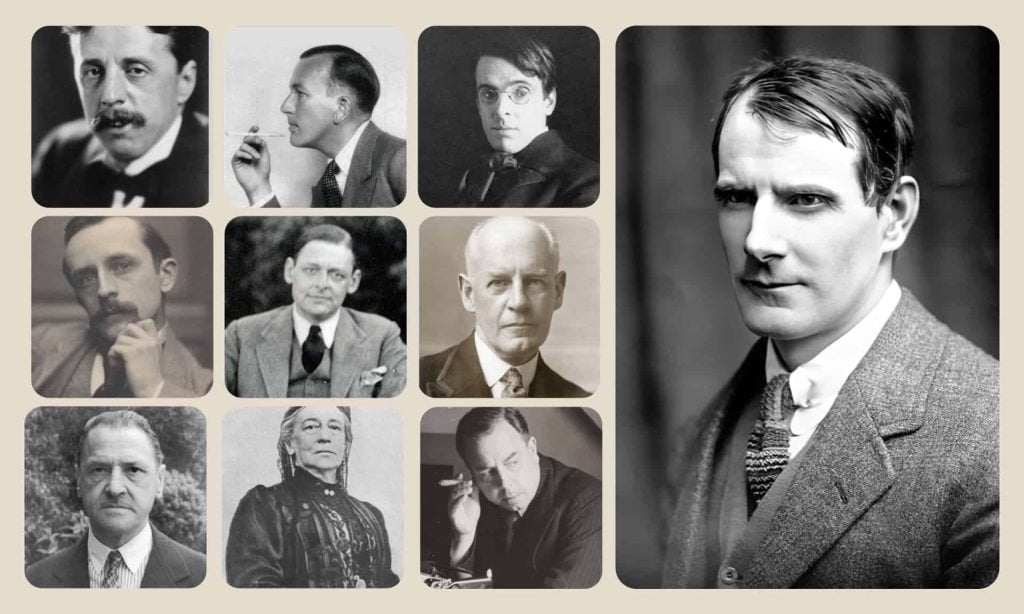
Uncovering the hidden gems of 20th century British drama.
In last month’s issue we surveyed the two literary genres of poetry and the novel at the turn of the 20th century which we defined as an Age of Self-Discovery.
We saw how the tide began to change during the last two decades of Queen Victoria’s reign, when some writers sought a newer and fresher approach to literature.
We then surveyed the literature that developed with the onset of the First World War, which had triggered in man the awareness to see life as an abyss of incessant self-discovery.
British drama was not as thriving and dynamic as poetry and prose during the first decades of the 20th century. Following the successful era of naturalism during the end of the previous century, the theatre was left staggering to find its new identity and to shake off the brazen, banal and often exaggerated realism, which had contaminated the world of drama.
In the early 20th century some playwrights reverted to symbolism and dramatic fantasy with escapist plays like Peter Pan, by Sir James Barrie.
The Irish Literary Theatre
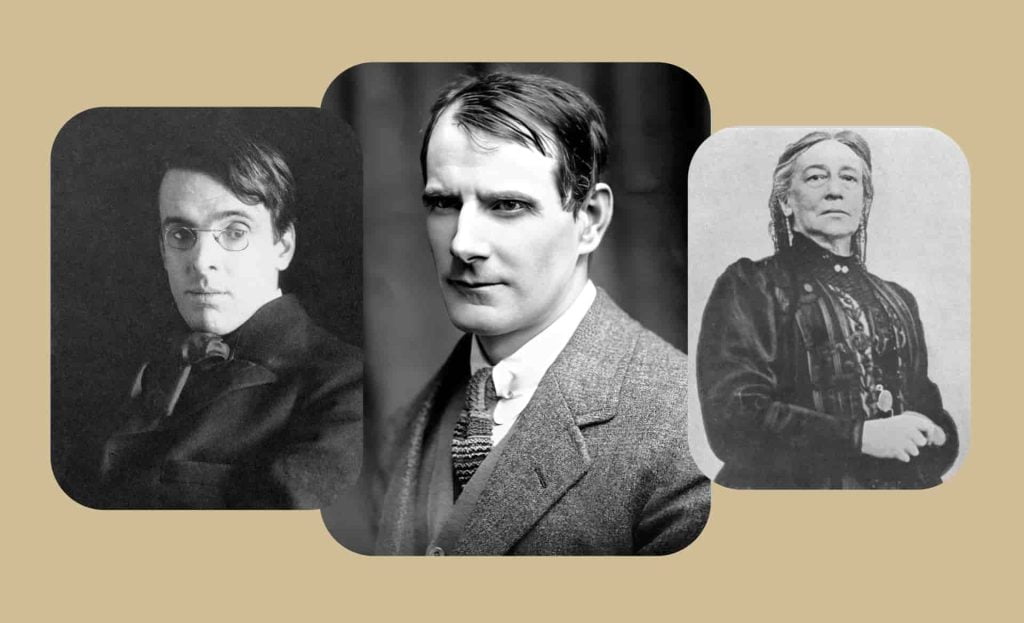
The most representative writers of this period belonged to the Irish Literary Theatre, and included W.B. Yeats, Lady Augusta Gregory and Sean O’Casey. They had their plays performed in the Abbey Theatre, which eventually became the fulcrum of the Irish acting tradition.
The literary career of Sean O’Casey commenced in 1923 with his involvement in the Abbey Theatre in Dublin. By that date he had written four plays: The Frost in the Flower, The Harvest Festival, The Crimson and the Tri-Colour and The Shadow of a Gunman.
The last of these plays proved to be a great success and received praise also by Yeats and Lady Gregory, who ran the theatre. Produced in 1923, it was accepted by the Abbey Theatre immediately, without any revision of the text.
It portrayed the devastating situation in Ireland, the problems of Irish independence and the psychological analysis of Seamus Shields, who pretended to be a daring, dangerous hero. In reality Shields was weak and cowardly. His words described the Irish condition thus:
The country is gone mad. Instead of counting their beads now they're countin’ bullets; their Hail Marys and Paternosters are burstin' bombs - burstin' bombs, an’ the rattle of machine guns; petrol is their holy water; their mass is a burnin' buildin'; their De Profundis is "The Soldier's Song”, an' their creed is, I believe in the gun almighty, maker of heaven an' earth - an' it's all for 'the glory of God an' the honour o’ Ireland.
Juno and the Paycock (1924) and The Plough and the Stars (1926) followed and today are considered his most popular plays, with the latter often regarded as his masterpiece.
Juno and the Paycock
Set in 1922 during the Civil War between Irish republicans and supporters of the Free State settlement, Juno and the Paycock not only addresses political issues surrounding the Irish question, but also focuses on the poverty and slums of Irish life.
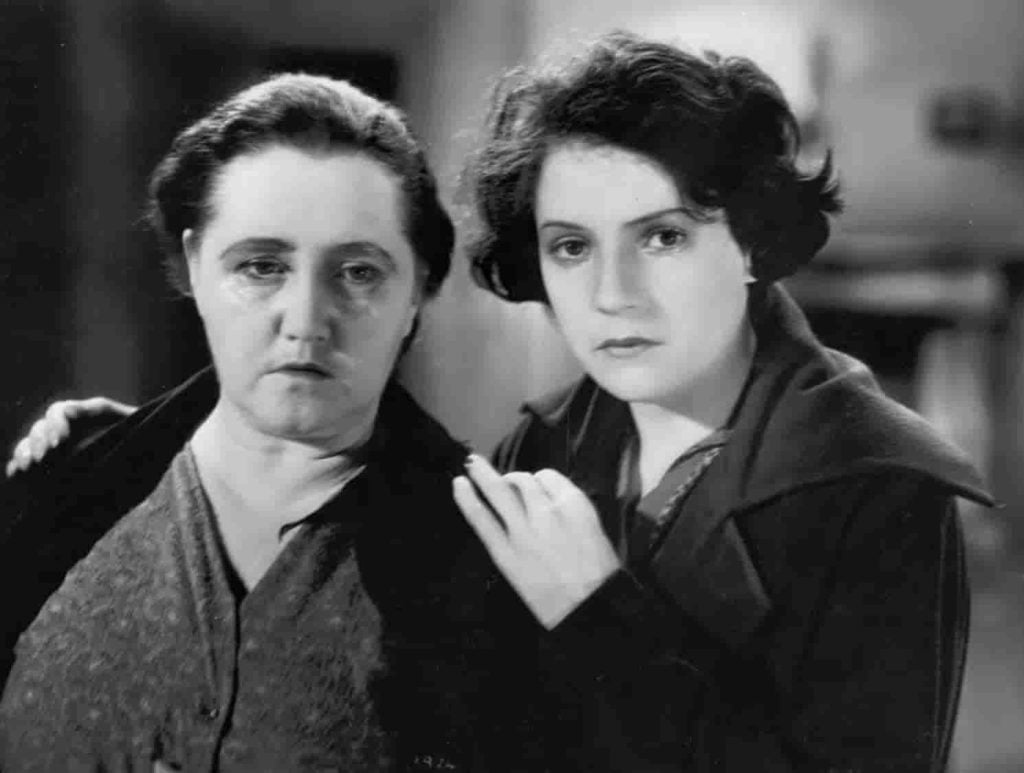
The literary critic Herbert Goldstone believed that this play could be ‘underrated’ or ‘overrated’. He wrote in his, In Search of Community:
“We can all too easily both underrate and overrate Juno and the Paycock, the brilliantly amusing but sometimes heart-rending portrayal of the disintegration of a Dublin tenement family, the Boyles. We can underrate the play if we merely think of it as a lively, free-wheeling comedy that suddenly takes a tragic turn at the end. While in some respects the tragedy is forced and sudden, the comedy remains an integral part of Casey’s vision in which folly, selfishness, and moral chaos have grim, tragic consequences. On the other hand, we overrate the play if we assert that its affirmation of responsibility and elemental family love, embodied in Mrs Boyle (Juno), is as sustained or powerful as the irresponsibility and selfishness embodied in Boyle himself (the paycock).”
The Plough and the Stars, which was set during November 1915 and during the 1916 Easter Rising, also went beyond the political issues, focusing on religion, sex and patriotism.
The story did not follow the parameters of the staunch nationalists who saw Ireland as flawless. The anti-heroic interpretation of life in that period made the play extremely unpopular in his days.
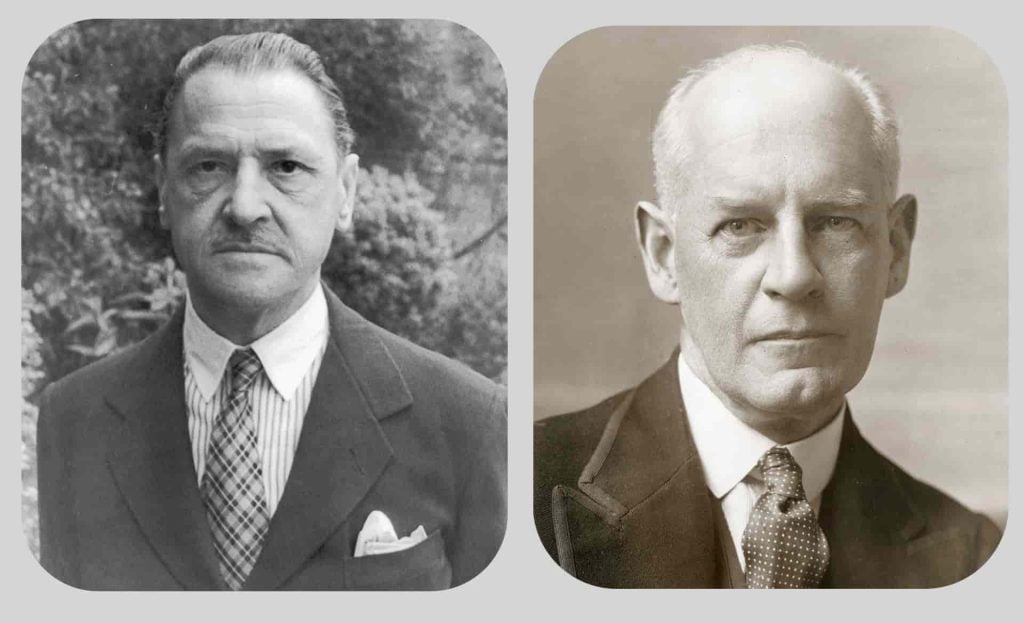
William Somerset Maugham and John Galsworthy as the writers of Of Human Bondage and The Forsythe Saga, were also very successful playwrights. Their works did not show any significant forms of experimentation or innovation, but nevertheless they excelled respectively in wit, satire and structural technique, and realistic social content.
Maugham’s The Circle (1919), The Constant Wife (1926) and The Breadwinner (1930) were perfect examples of his masterful use of language and wit, while Galsworthy’s The Silver Box (1906), The Skin Game (1920) and Escape (1926) reflected the playwright’s social awareness and acute perception.
Noel Coward also reached the heights of popularity during this period with his high-society comedies like Fallen Angels and Hay Fever, both produced in 1925.
Other two successful playwrights of the early 20th century were Arnold Bennett, who was also a typical realist novelist, and John Boynton Priestley, who reverted to the theatre with Dangerous Corner (1932) after achieving fame as a novelist. A particular type of Drama which could be termed as poetic drama or verse drama was also quite popular at the time.
The main exponents of this trend were T.S. Eliot, who in 1935 wrote Murder in the Cathedral; Christopher Fry, who wrote The Boy with a Cart in 1938, and A Phoenix Too Frequent in 1948; and W.H. Auden, who wrote in collaboration with Christopher Isherwood, The Dog Beneath the Skin, in 1935, The Ascent of F.6, in 1936 and On the Frontier, in 1938.
T.S. Eliot
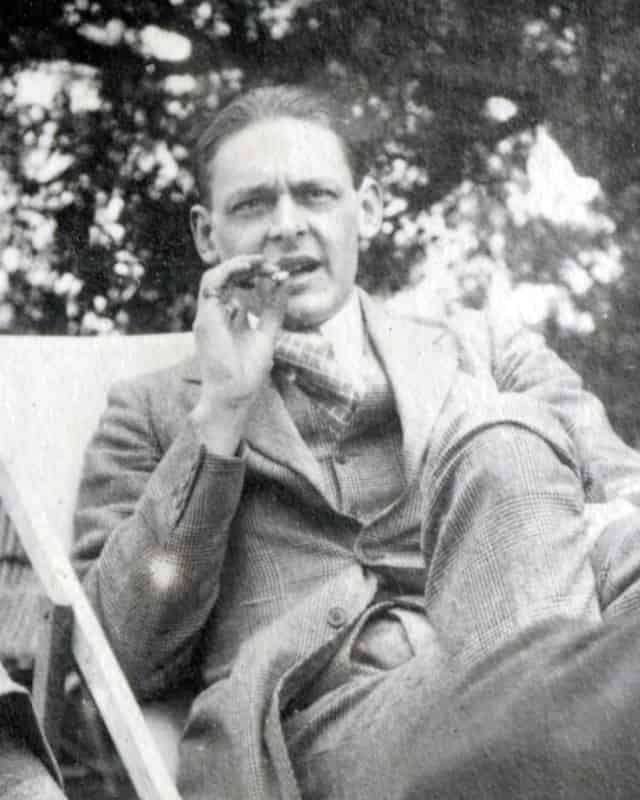
T.S. Eliot was definitely the most important of the poetic playwrights. He was already an established poet by the time he wrote Murder in the Cathedral. His Prufrock and Other Observations, published in 1917, and The Waste Land, published in 1922, won him not only respect as a major poet of the times, but also recognition as one of the most influential intellectuals of world literature.
Verse drama, which has its roots in the Renaissance period, was exploited to perfection by Eliot. In The Use of Poetry (1933), Eliot wrote that “the ideal medium for poetry […] is the theatre”, and by 1936 he concluded that poetry was “the natural and complete medium for the drama.” His theatre works were symptomatic of his theory.
The Rock (1934) blended eight different types of verse, varying from free verse to profound lyricism.
Among his other plays, like The Family Reunion (1939), The Cocktail Party (1950), The Confidential Clerk (1954) and The Elder Statesman (1959), Murder in the Cathedral was the most successful.
Murder in the Cathedral
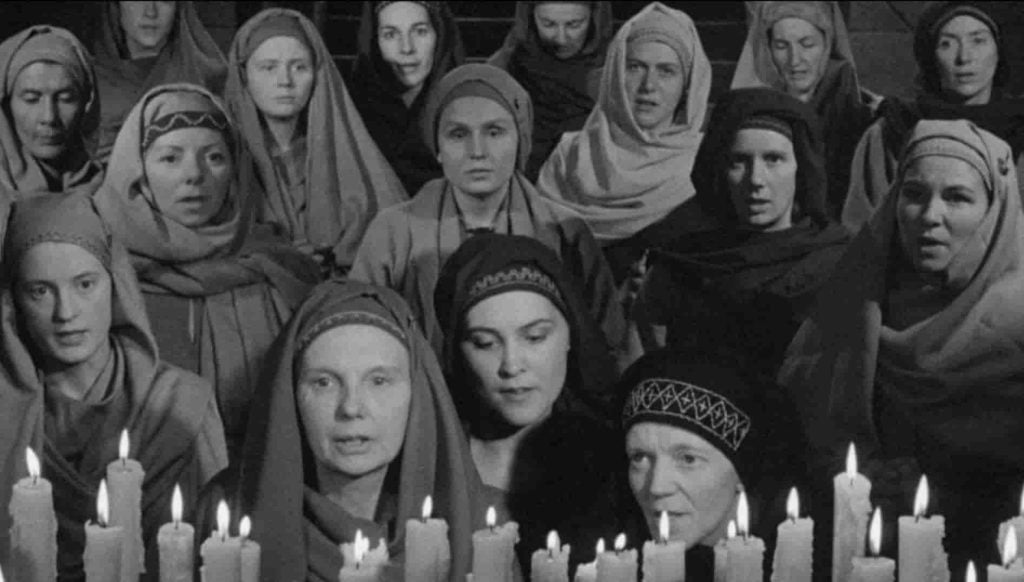
Eliot wrote this play with the idea of the versification of Everyman, the 15th century morality play. He wrote it for the Canterbury Festival of June 1935.
The story is about the life of Thomas à Becket whose martyrdom in Canterbury was a very sensitive issue for the English.
Henry ll was the cause of Becket’s assassination, which took place in Canterbury cathedral on December 29th 1170. The play is not only dramatic in its content but also in its structure.
The dramatic poetry is highly effective and the metrical form is very similar to the alliterative verse of Middle English. One of the best qualities of Murder in the Cathedral is the blending of highly poetic and dramatic speech with realistic everyday expressions.
Grover Smith, gives a perfect account of the essence of Eliot’s play in his T.S. Eliot’s Poetry and Plays, in which he portrays the intimate development of the character rather than the external plot that surrounds him.
“The play, though certainly taking its theme from the murder of St. Thomas à Becket in 1170, is not about “murder in the cathedral” but about the spiritual state of a martyr facing death, the spiritual education of the poor women who are witnesses to his sacrifice, and the wilful’ opposition of secular to eternal power [..] It is true that the historical personality of Becket gave the foundation to the plot. Eliot took a good deal of care to make the historical actions accord with the most trustworthy accounts of Becket’s contemporaries, but, since the play concerns rather what happens through the man than what happens to him, such details are largely incidental – as is all the action properly so called – to verbal expressions of various attitudes.”
Apart from the very popular Edwardian Plays, the Irish Literary Theatre, the handful of popular playwrights of the 1920s and 1930s, and the poetic playwrights championed by T.S. Eliot; British theatre had to wait for the post-World War Two period to witness true revolution and experimentation with the movements of Angry Young Men and the Theatre of the Absurd.
A Detailed Look at the Ancient Nativity Fresco in the Catacombs of Santa Priscilla
By Carla Pietrobattista
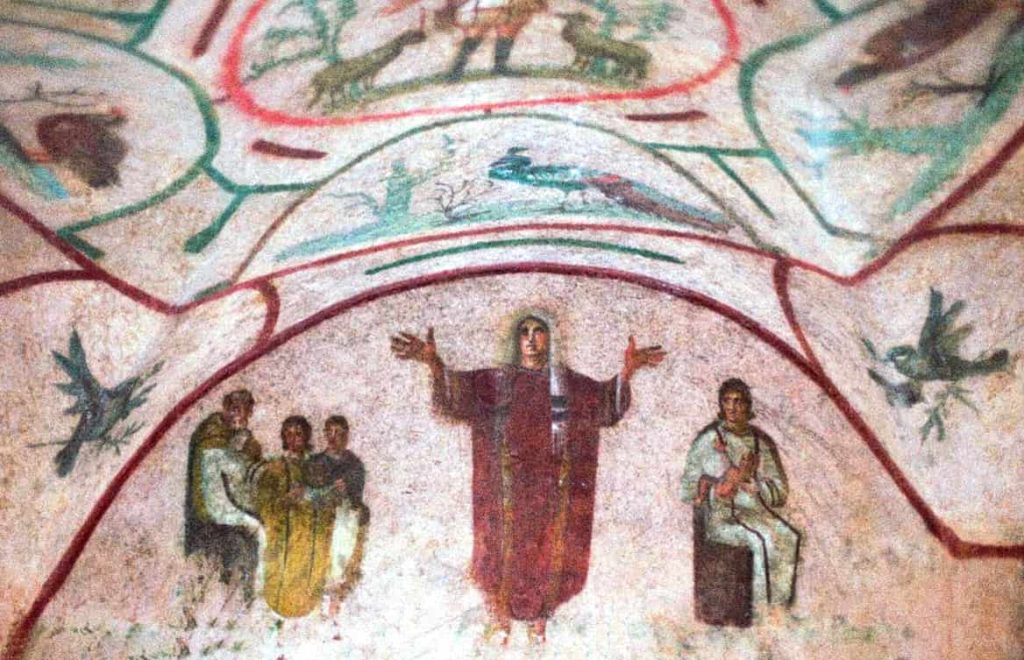
Dive deeper into the history and symbolism of early Christian art with our analysis of the ancient Nativity Fresco in the Catacombs of Santa Priscilla, Rome.
Over time, I have learned that when it comes to art it is not necessary to be original at all costs, I simply understood that I have to write what I think, in the way and in the times that most belong to me.
I certainly would not try to be original and captivating during Christmas, a time that most of all tells us about traditions and the need to go back to basics.
It is precisely this simplicity and expressive spontaneity, combined with my personal need to go back to the origins, that guided me in choosing the nativity that we will examine as a symbol of this Christmas: the one preserved in the catacombs of Santa Priscilla in Rome, which it is the oldest scene reproducing Mary with the newborn baby Jesus that has come down to us.
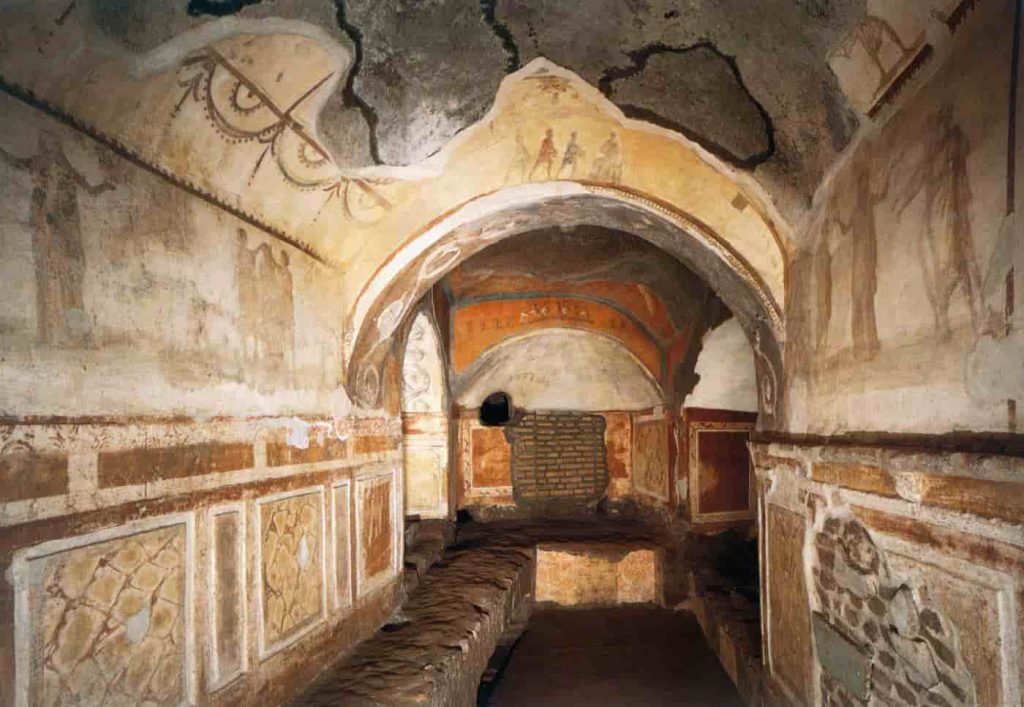
Catacombs are underground tombs used by early Christians for burials and rituals. The catacombs that house this fresco are named after Priscilla, a woman from the Acilii family, also mentioned in Roman martyrology for having donated land to the Christian community so that catacombs could be located there.
The catacombs of Priscilla, which were dug out between the 2nd and 5th centuries, are certainly the best known of all the underground early Christian cemetery environments. They are also the ones with the most martyrs and pontiffs buried there. Precisely because of this significant presence in antiquity these catacombs were called “regina catacumbarum”.
The paintings that decorate the walls of the numerous tunnels (the catacombs extend for more than thirteen kilometres) are varied. Some frescoes, although deprived of their original religious meaning, recall the ancient pagan tradition; others instead testify quite explicitly to the Christian cult and the Old Testament.
The fresco reproducing the nativity is on the ceiling of a niche that housed the body of a martyr; therefore a burial that was certainly very popular in antiquity.
The position of this niche in the initial part of the cemetery and the drawing and painting characteristics of the fresco, suggest a dating that places it within the first half of the third century.
Although part of the drawing has been lost, all the elements and subjects that help us to identify and read the scene are evident, including some natural decorations such as branches and flowers that frame the subjects.
Mary and her child
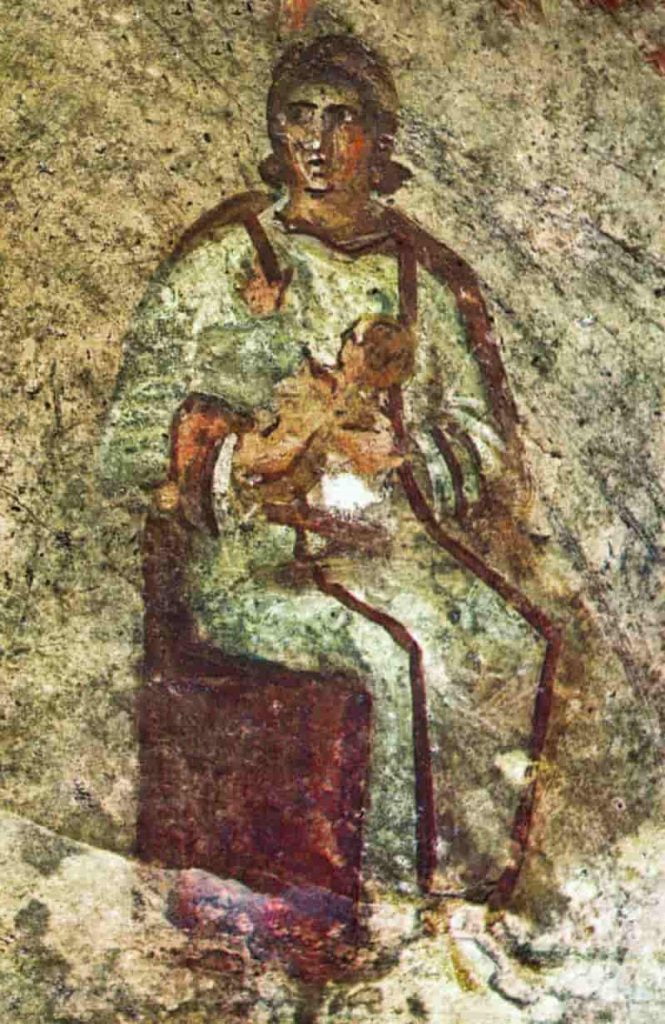
On the observer’s right we see Mary seated with her Child in her arms. The Virgin’s robe, a short-sleeved tunic, recalls the style of Pompeian paintings, even the natural process of colour degradation seems to evoke the nuances of Campanian paintings.
Mary is depicted with her head covered by a veil, a symbol of divinity or consecration to divinity. Despite the state of conservation of the fresco, we note a gesture of the subject exempt from subsequent intellectual and theological settings.
Mary affectionately supports the little one in her arms like any mother, without symbols or movements typical of later depictions that suggest an awareness, or at least a premonition, of the Passion.
The child is depicted with his torso flexed to give an idea of movement. This twist, together with the mother’s caring attitude, removes the static nature of the scene.
The Orans
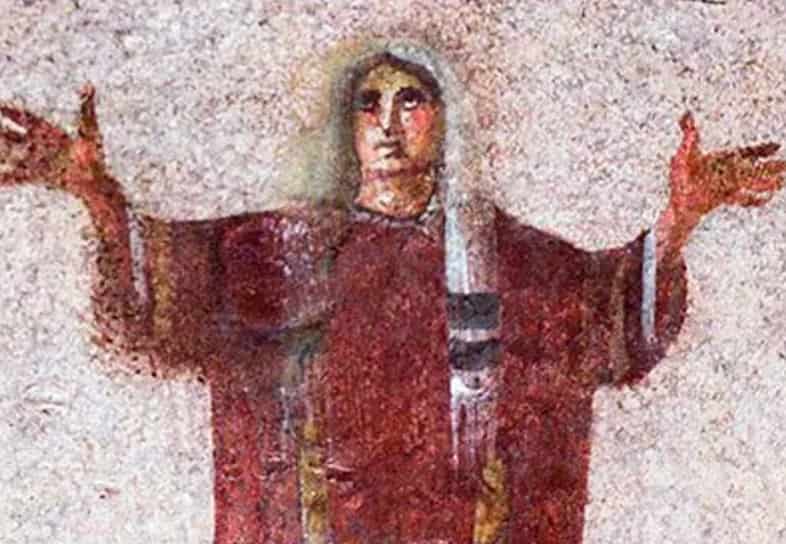
The person standing in the middle, depicted in the “orans” posture, is thought to represent a consecrated virgin who was buried in this tomb. The scene in the background to the left is believed to depict her consecration to a life of virginity. The figure is holding a veil and is being admonished by the bishop, who sits in a cathedra and is assisted by a deacon, pointing to the Virgin Mary as a model for her life.
The man on the left
This feeling of dynamism is almost completely missing in the character on the left of the observer. I am referring to a male subject, depicted in a lateral position, pointing to the child Jesus and his mother. Although the subject appears somewhat static, a different pictorial purpose has been achieved here.

The man is portrayed with such proportions compared to those of Mary as to be distant from her and is useful in as much as he adds a different dimension to the story. In fact, this male figure suggests a prophet in the act of announcing, prophesying, the advent of the Messiah.
It is not easy to speak with certainty of the identity of this man, scholars have proposed various hypotheses and the one that is certainly the most plausible is the one that identifies him with the prophet Balaam whose very interesting story is present in the book of Numbers.
Balaam was a good man, chosen by the king of Moab to curse and block the Jewish people on their way to the Promised Land. The man tried to cast the curse three times without success and ended up becoming a prophet instead.
The part of his prophecy that appears to be alluded to here says: “I see him, but not now, I behold him, but not closely: a star rises from Jacob and a sceptre rises from Israel” (Numbers: 24.17).
The “far” position with respect to Mary and the hand stretched out to indicate a star, placed right above the Virgin and the child, seems to confirm the identity of the prophet with Balaam. The conceptual complexity of the prophecy goes hand in hand with the simplicity of its pictorial representation. What the prophet saw was drawn, nothing more, nothing less, without hidden symbols or concepts.
The Epiphany
The star presented by the scriptures to indicate the birth of the Messiah is also present in another fresco in the catacombs that depicts another moment that has always accompanied the paintings that celebrate this particular period of the year: the Epiphany.
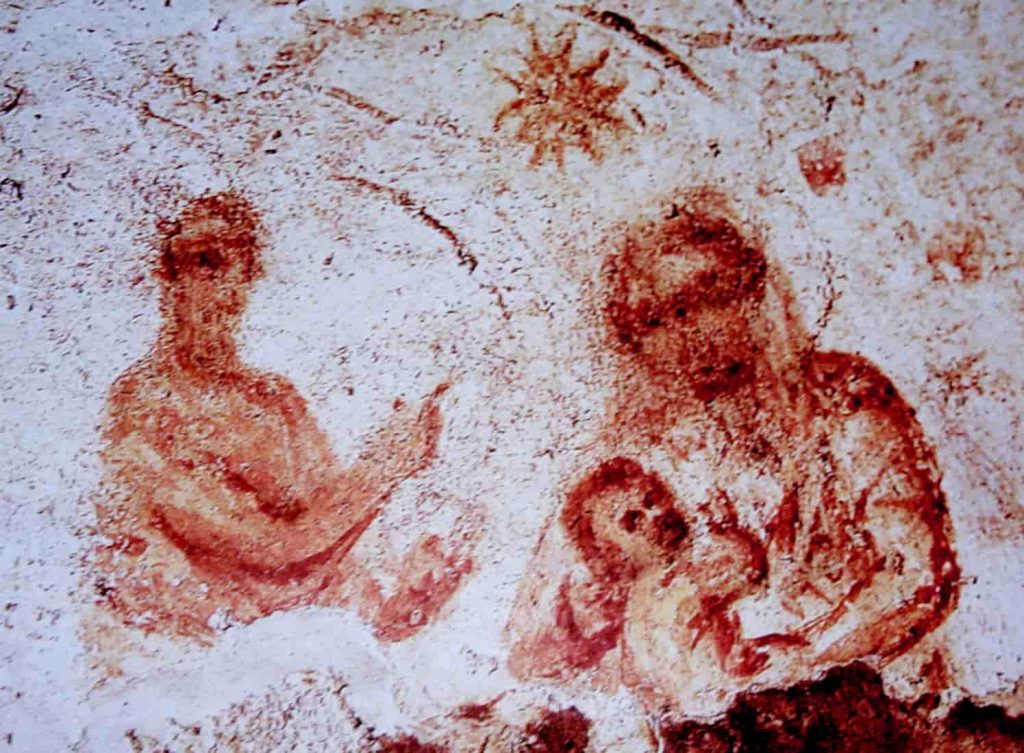
In the area of the catacombs of Priscilla, known as the “Greek Chapel”, in the upper part of a cubiculum made to house sarcophagi, this interesting representation can be found, dating from between 200 and 250.
The fresco is really very simple, but at the same time detailed enough to offer, also in this case, a good indication as to the passage of the scriptures from which the artist of the Magi was inspired.
Arrival of the magi
The scene of the arrival of the ‘magoi’ does not present the usual elements we have come to expect. The three wise men arrive on foot, each subject depicted with disarming simplicity, still retaining its own precise identity, which is also represented through a differentiation in the colour of their clothes.
The distance between the Magi and the Virgin and Child is minimal, a clear sign that the journey of the wise has now come to an end. The three can approach, with a path that proceeds from left to right, to deliver their gifts to the king they have been looking for from so far away.
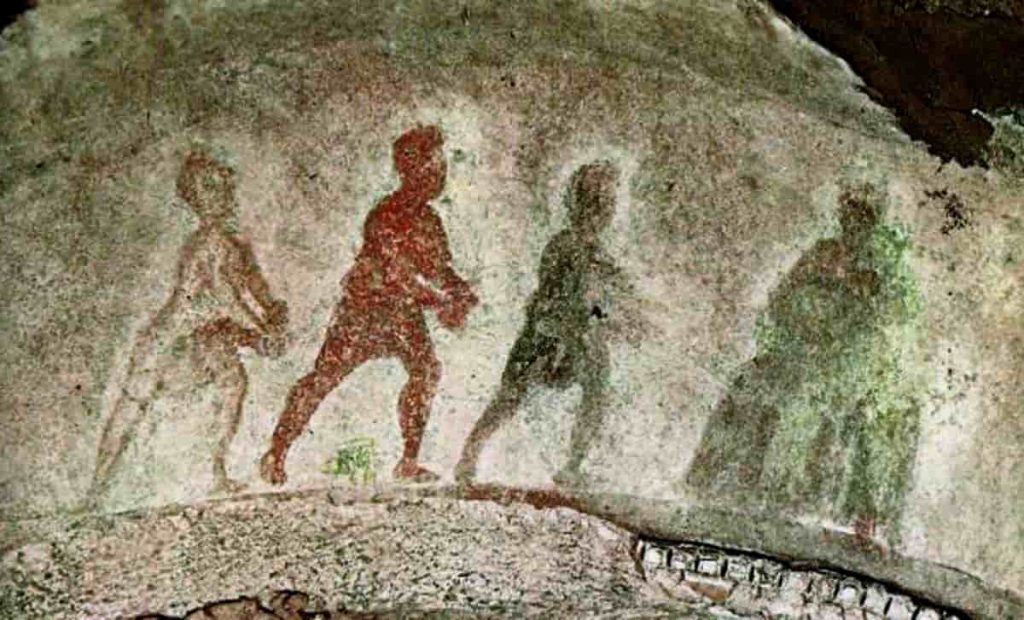
The star that guided them on their journey, which nowadays is almost completely faded, is depicted right above the newborn and his mother.
The simplicity of the scene does not correspond to the artist’s lack of knowledge of the characteristic and characterising elements of the event as is recounted in the Gospel of Matthew.
The detail of their eastern provenance, for instance, is rendered through the introduction of a particular headdress, typical of the oriental tradition, namely, the Phrygian headdresses that the three are wearing.
This element, just like in the case of the identity of the prophet, does not distract attention from the overall reading of the scene.
The Universal Message of the Frescoes
The understanding of both frescoes is immediate, there is no question of not having grasped what has been seen, because the message that was conveyed is roughly universal.
It is obvious that the reading was reserved for fellow believers, but the symbolism of the elements is not cryptic, it is simply an accessory to what is the purpose of art.
Regardless of the styles or the historical periods in which it is channelled, art has always one primary purpose, that is, to share messages and give emotions.
The Fight to Eliminate Jiggers Disease – In Pictures
By Joe Wain
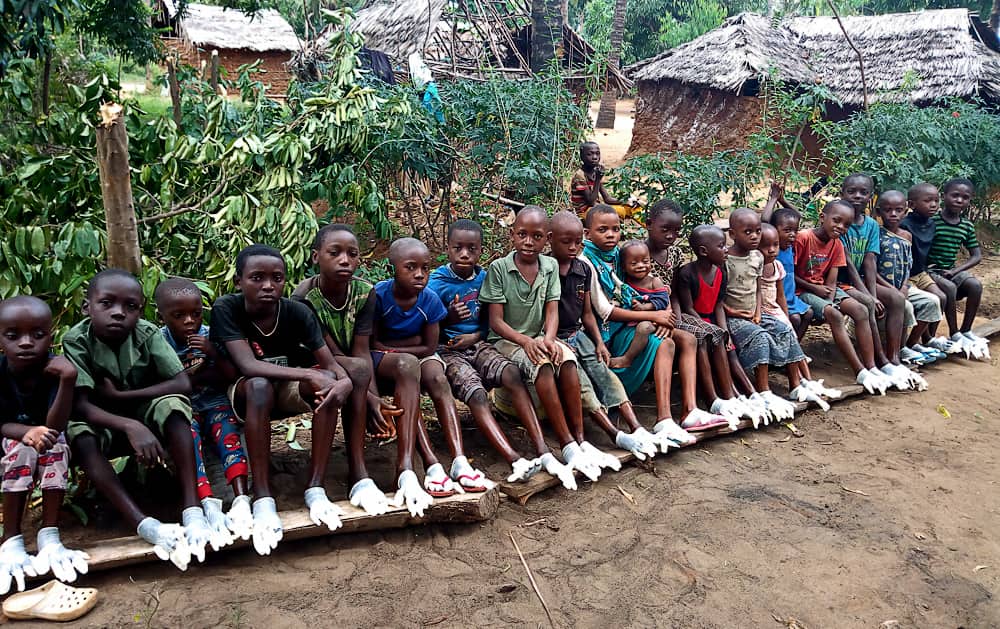
Joe Wain’s collection of photos portray the devastating effects of Jiggers Disease in Kenya.
- Warning: Some of the photos in this gallery may be disturbing to some viewers.
- Browse gallery and learn about the disease →
From Royal Farewells to Zombie invasions: The 2022 Trivia Throwdown
Adrian Liberto
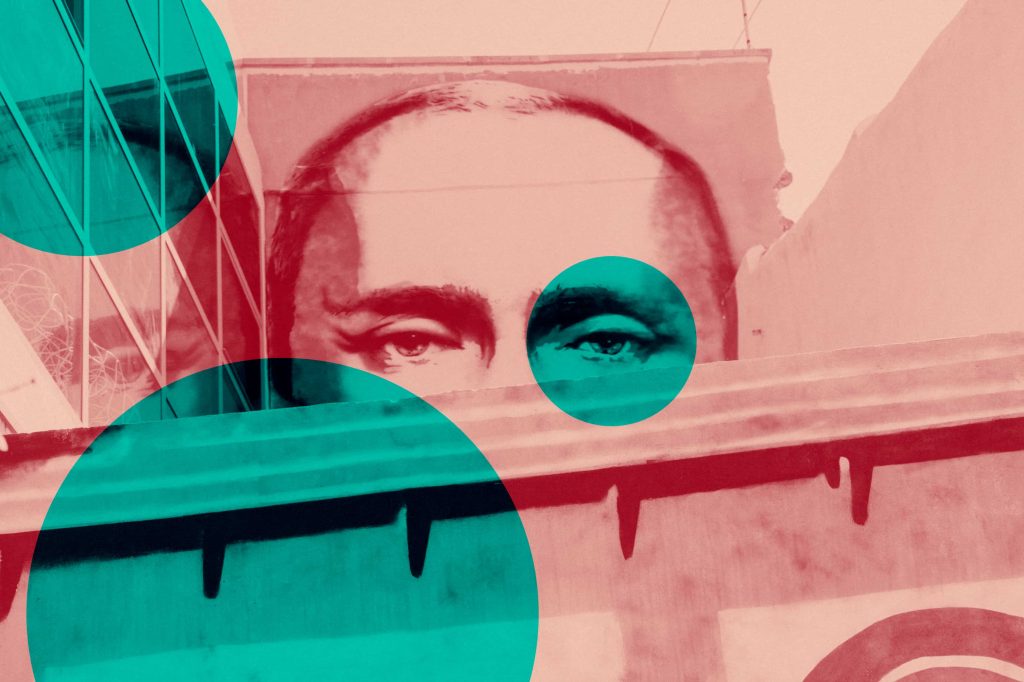
2022 was an eventful year: We lost the queen of England, the king of football and the Pope Emeritus. We witnessed the full scale invasion of a European sovereign State by a zombie colonial power.
We suffered some of the worst effects of climate change, with disasters affecting different parts of the globe. Here’s a quiz covering some of the events of 2022.
Thank you for being with us! See you next month! ❤️

